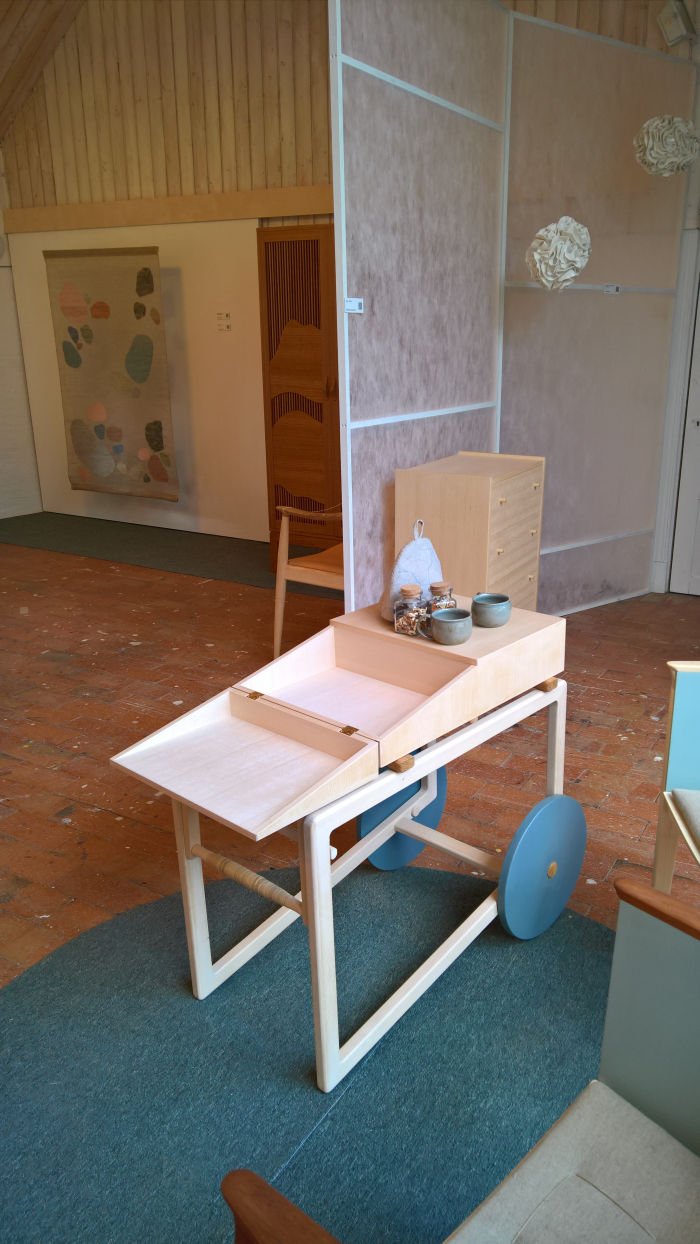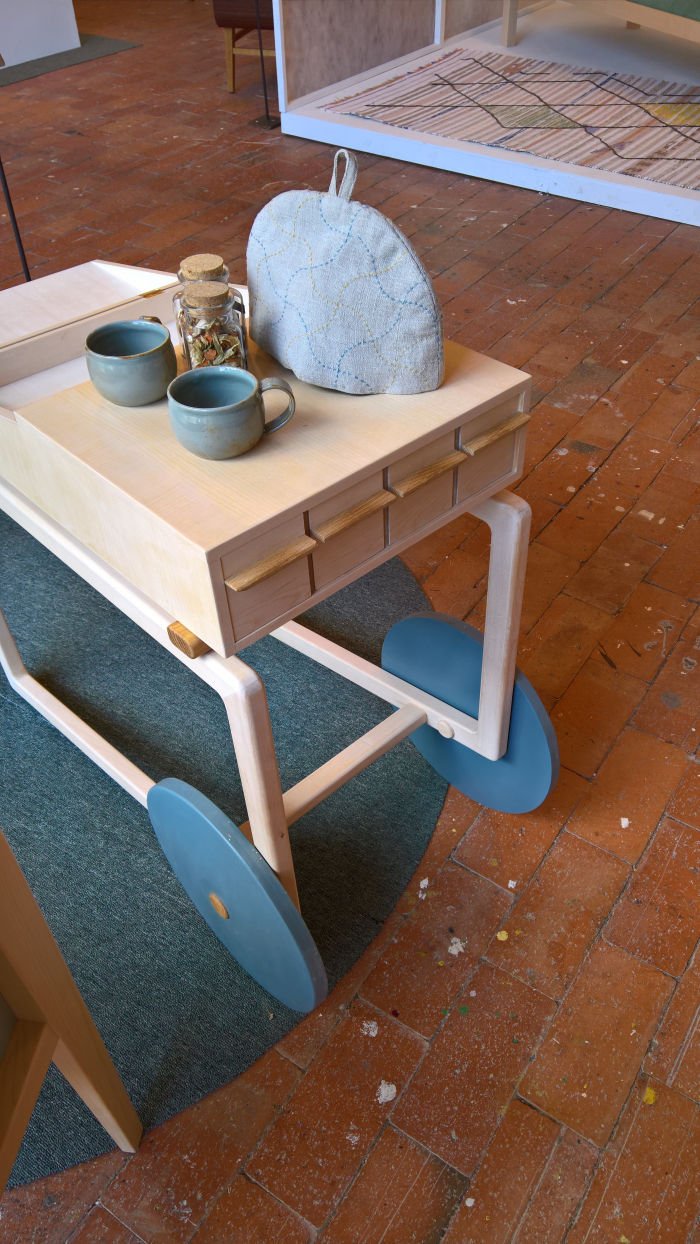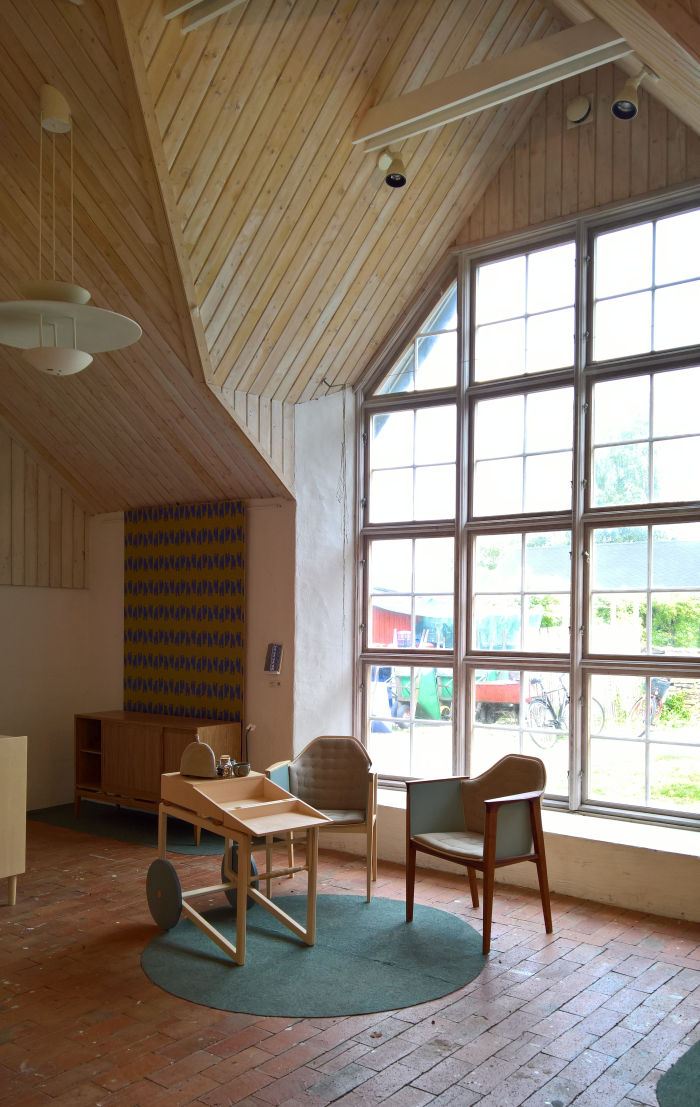For Jazzy Jeff and the Fresh Prince Summertime may very well be a "Time to sit back and unwind", for us Summertime is when our year finally, finally, gets going.
While others spend the long hot days of summer on the beach, in the mountains, riding around in their Jeep, their Benzos, Nissan or eating pizza at Lorenzos, we're to be found either riding backwards in trains, our eyes fixed firmly on the past as we race into the future, terrified that a metaphor is becoming an omen, or wandering the corridors, ateliers and workshops of European design schools, considering and reflecting on not only the students' semester and graduation projects, but contemporary European design education, the positions of the coming generation of designers, and questioning if the world, the society, laid out before us is one we we want to be part off? Weeks of travel, reflection and existential anguish sustained by no more than our endless curiosity, more water than we consume the rest of the year and the promise of a (near) daily falafel.
That's our "new definition of summer madness"
Drrrums please.......
While much of the 2019 #campustour is very much as every year, not least the quality of the humour we will so stubbornly attempt to introduce in to the posts, the one major difference is that whereas previously we've posted on the schools individually, this year we'll be posting by country, or region where a country focus would be impractically large in one post. The reason for the change is simply that neat and logical a format as school by school is, there are only so many ways one can construct such posts before they become monotonous. Or put another way, we've discussed some schools so often in these dispatches that the only medium left to us to approach them afresh is dance. And that's getting a little too close to Rudolf Steiner for our sensibilities.
That we've discussed many of the schools that (will) feature in our 2019 #campustour in previous posts, we refer you dear reader to them for their backgrounds and histories, this year it is all about the projects, whereby, and as ever such showcases never are, and never should be, about the work per se, far less comparing works, each standing, as they do, as an individual representation of how the individual student's understanding of design and their position to design/the world led them to approach the set brief and also how that understanding and position has evolved/is evolving and developing in the course of their studies. And that is something you cannot read from a project presentation alone. The projects, and for all the positions inherent in them, can, should?, however stimulate and provide you with nourishment for further considerations and discussions on the subject/themes involved and thereby help you refine and develop your own understanding of and position to design. And by extrapolation the world around us.
The 2019 smow Blog #campustour opens, as tradition demands, in Sweden. Strictly Sweden (minus Stockholm), the Swedish capital will feature in a later post of its own.
And so without further ado......
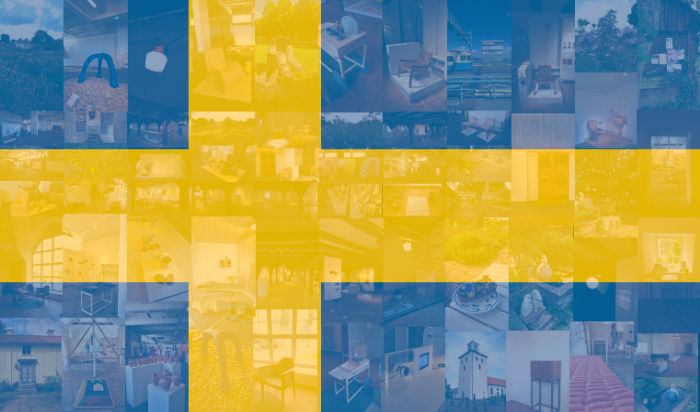
Form/Design Center Malmö's annual Vårutställning - Spring Exhibition - features a selection of projects by students from across the design and architecture departments at Malmö and Lund universities, and is always a most pleasing event; if one tinged by the knowledge that Lund University School of Industrial Design will stage a wider exhibition of their students' work an inconvenient couple of days after Vårutställning closes. Fine if you live in Malmö/Lund. Rubbish if you don't. As we oft note, while efficiency, usability and joined-up, system, thinking may be critical in design, for all in making that which designers create accessible and practical for the benefit of users; European design schools are notoriously awful when it comes to coordinating their annual exhibitions for the benefit of visitors. Or at least for those (potential) visitors not from the immediate vicinity.
But we digress.....
Without knowing, we'd guess that they've had huge problems with the lighting at Lund University this past year. Its certainly difficult to otherwise explain why so many Lund School of Industrial Design students have spent the past semester considering lighting in its various contexts: in addition to the two projects discussed in more detail below, ⇓ ⇓ ⇓, Jakob Andersson sought/seeks with Dosan to rescue the light switch from the obscurity towards which, and as previously noted from the exhibition Täglich Geöffnet in Halle, it is hurtling in our networked, smart home age; while with Sol Fabia Malmhagen developed a lamp aimed at countering triggers for Seasonal Affective Disorder, a condition which, in its wider considerations, is/was also taken up by Malmö Product Design graduate Erika S Axelsson in her project Dependant, a lamp which mimics daily illumination patterns with the aim of creating a more supportive environment through the long, dark months.
But it wasn't all lighting. With, for example, Cloudy Malmö Product Design graduate Ellinor Stålhammar explored acoustic solutions for nurseries, and thus locations not only with their own, very specific, acoustic challenges, but very specific community; Christina Zhou developed with Heme a reusable menstrual disc with a very logical, intuitive, storage/sanitising system, and interestingly whereas in years past menstrual disc/cup projects were focussed on, for example, the homeless or others in distress and emergency, they are very much developing, as with Heme, as universal concepts, something arguably linked to developing understandings of sustainability; and Malmö University Architecture Visualization and Communication students posed questions on subjects such as, and amongst many others, our fascination with old industrial environments, the function of art in urban environments, or how to achieve sufficient greenery in our dense urban spaces. All good and valid questions. But ones they didn't answer. Or at least not in the exhibition. We presume they did in their theses. In previous years copies of the theses, or at least abstracts, have been left out for visitors to read, but sadly not this year. Thus the(ir) answers, we know not.
Further information on Lund School of Industrial Design can be found at www.industrialdesign.lth.se and information on all graduation projects at www.schoolofindustrialdesign.com/degreeshow2019
Further information on Malmö University School of Arts and Communication can be found at www.mah.se/K3
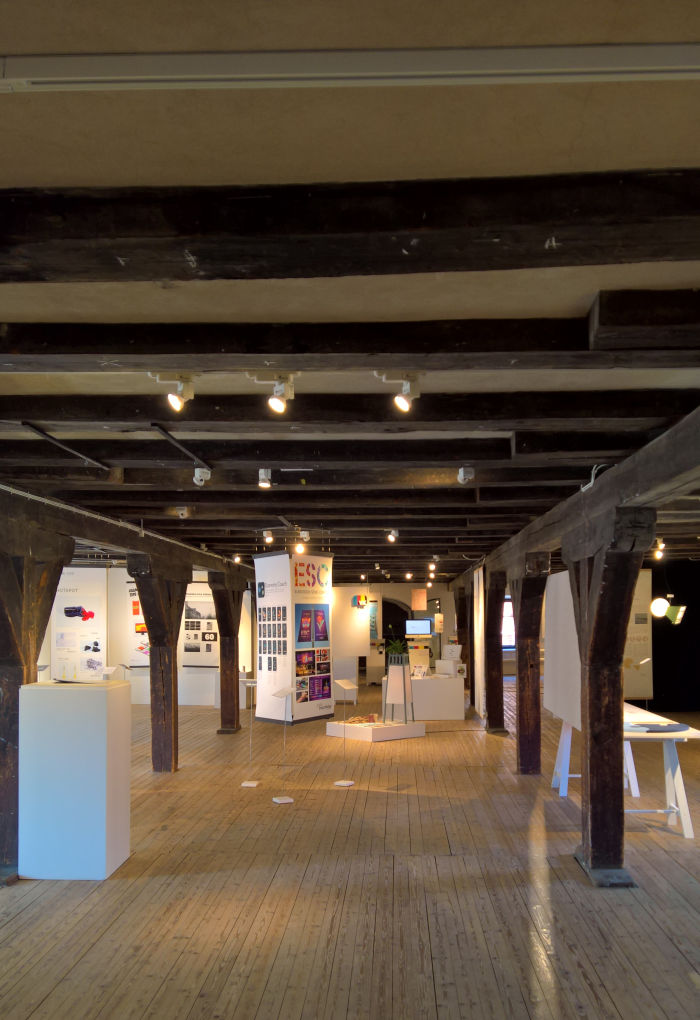
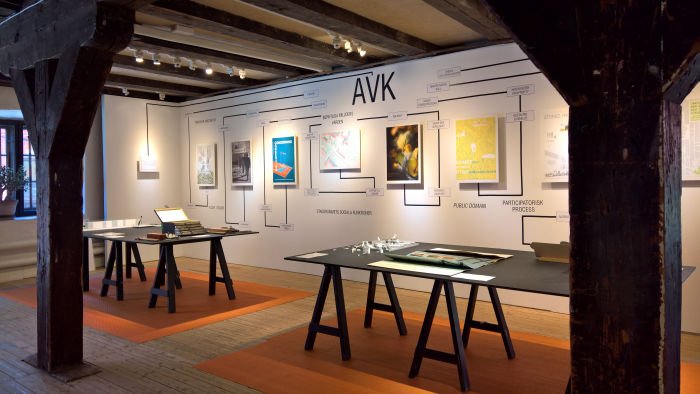
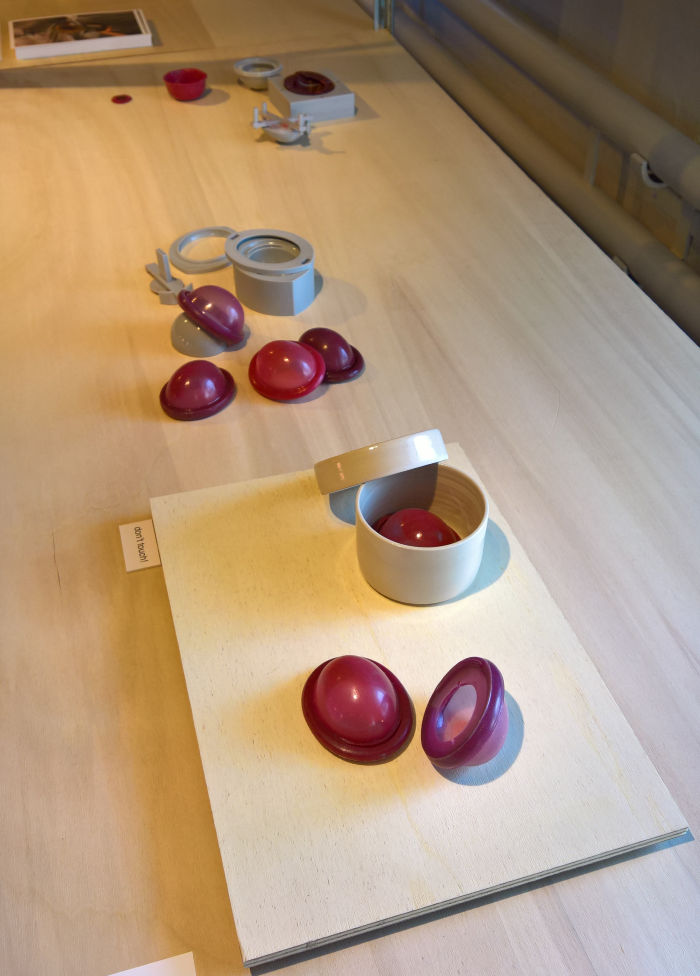
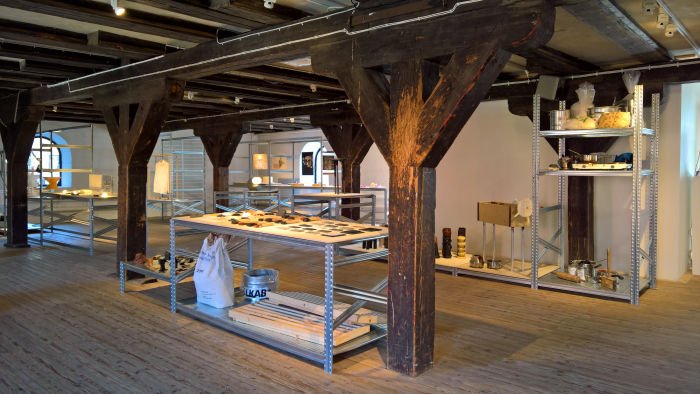
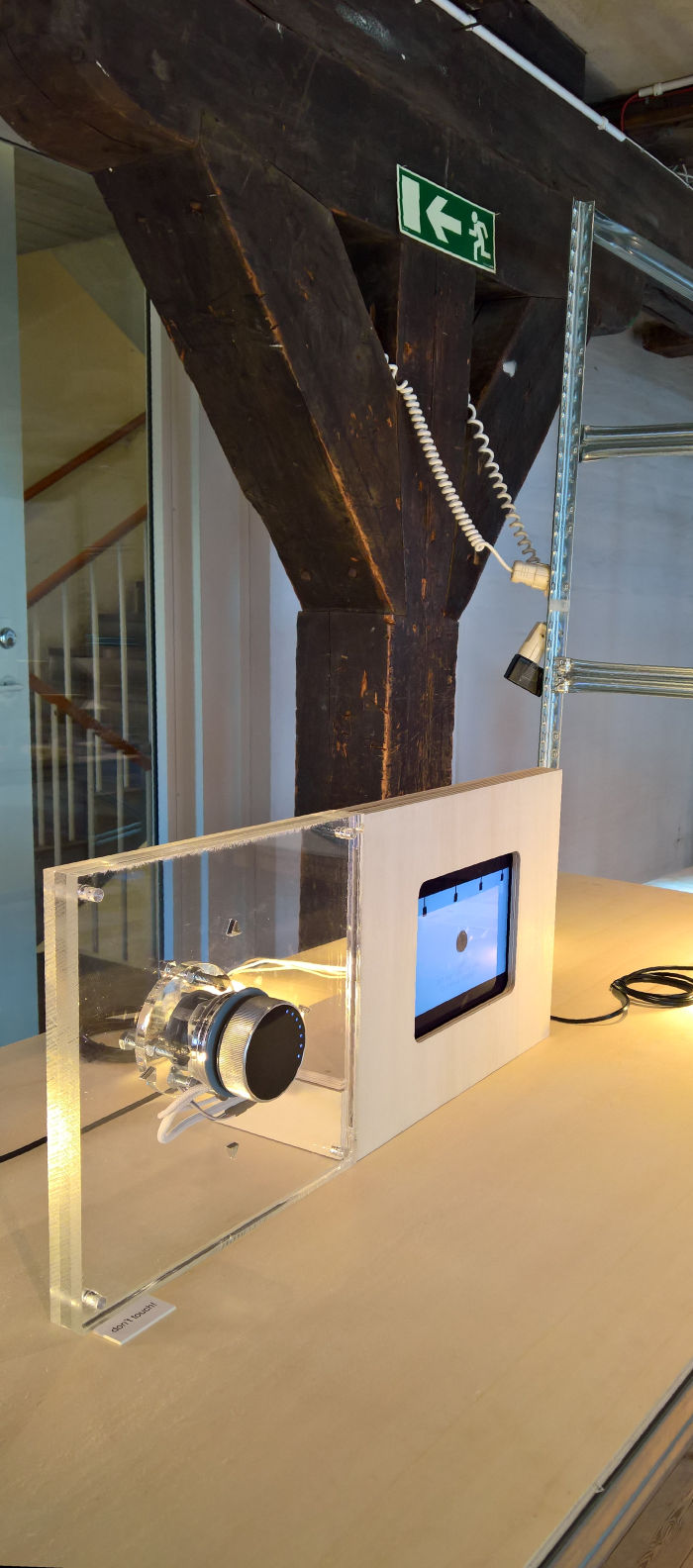
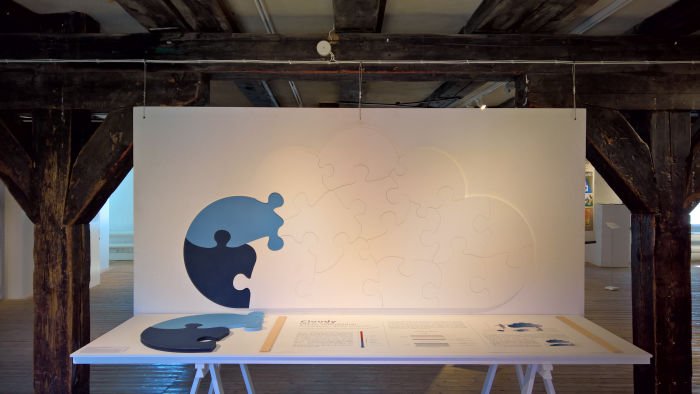
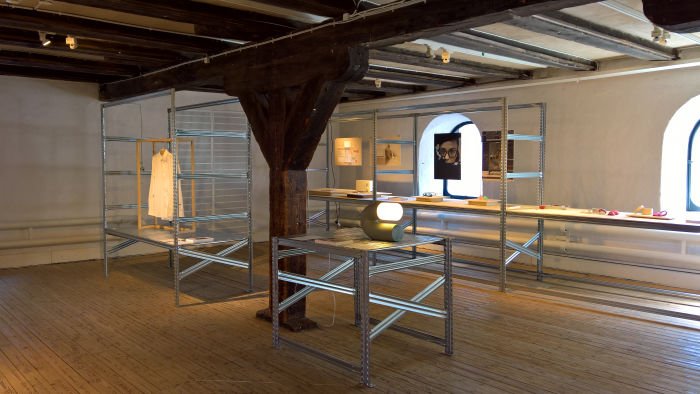
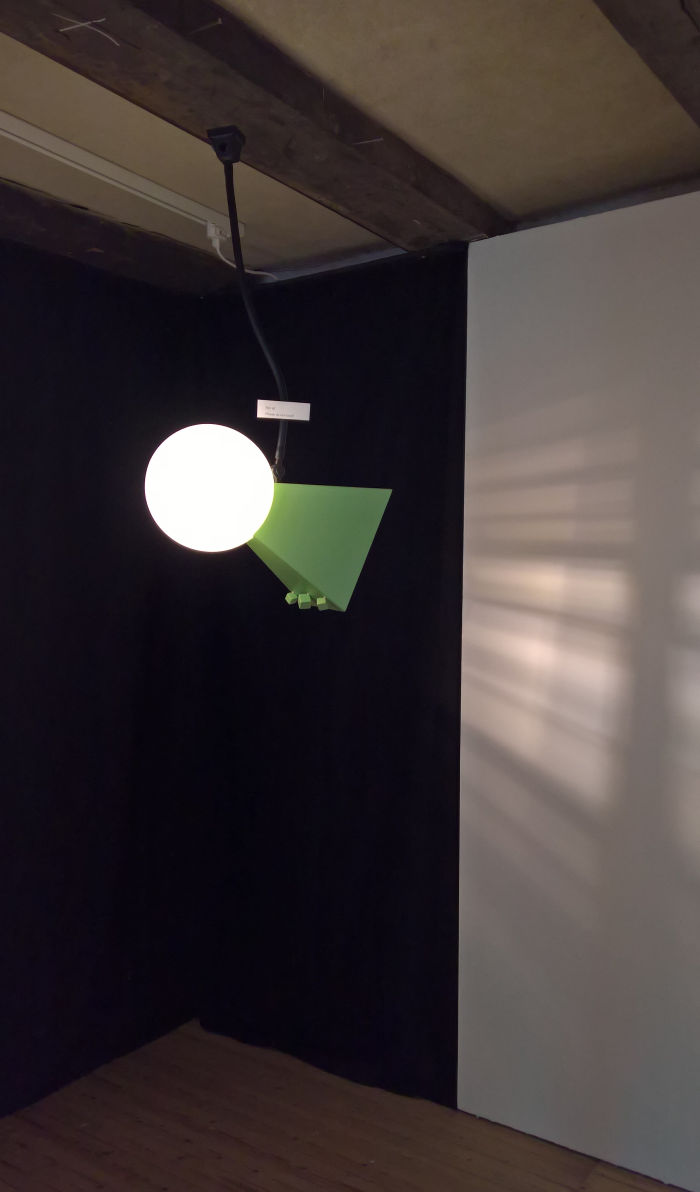
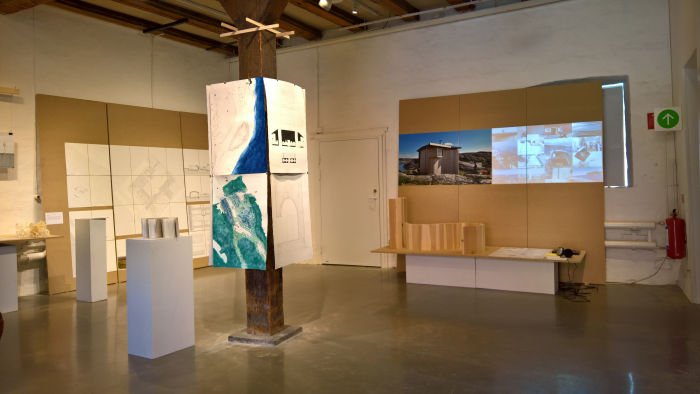

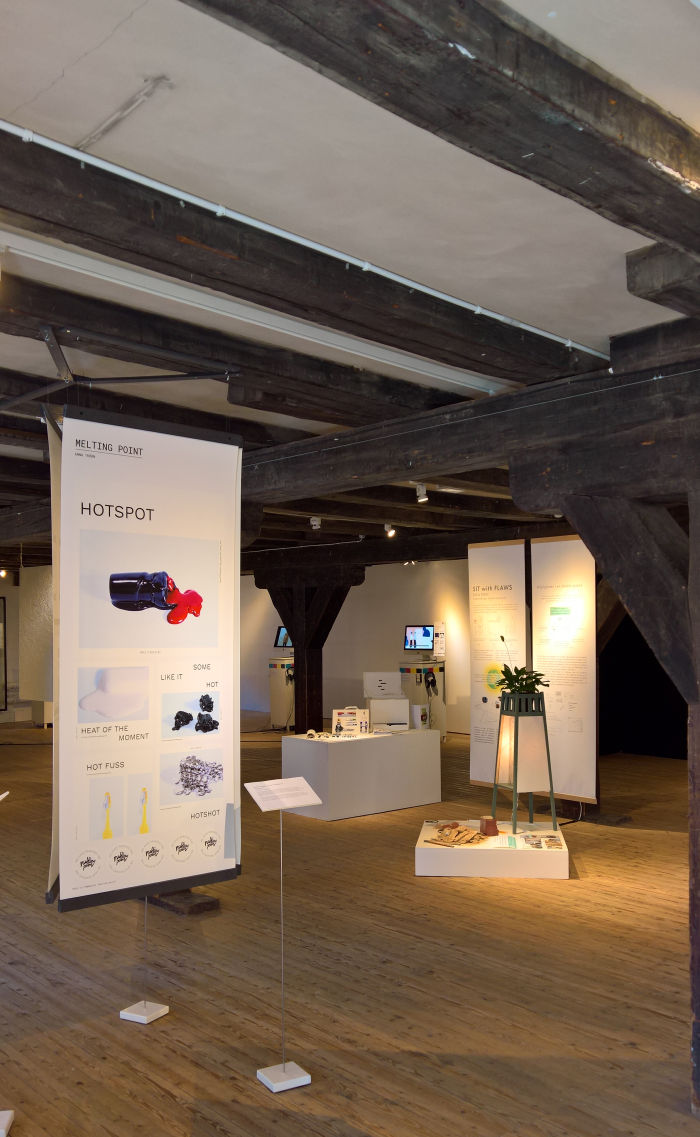
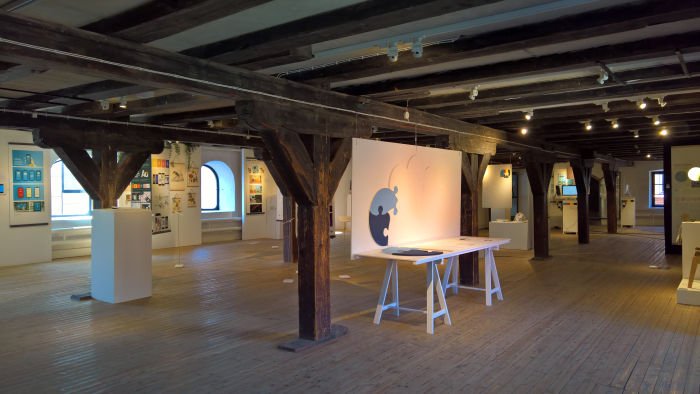
As anyone who has ever undertaken any home renovations, or worked on a building site, will understand, one of the worst designed lamps, ever, is the building site flood lamp. They may be great at illuminating spaces with a lux to turn our sun green with envy, but turn your head the wrong way at the wrong time and you'll be blind for a week. And while re-imagined versions are currently commercially available, the, one presumes ironically named, Glare by Martin Paulsson is a very interesting alternative proposition. Quite aside from reducing the risk of staring into an unprotected high lumen bulb, with Glare you can't, the opaque shade allowing for a meaningful light intensity and distribution with no danger of blindness, Martin's lamp also offers a variety of positioning/hanging options thereby allowing for good flexibility on-site, and by extrapolation a lot more variability in its areas of use than conventional lamps allow. And arguably most interestingly, comes with two integrated plug sockets thus allowing it to be used as a hub as much as a light, and meaning, for example, power tools can be used locally without the need for extension cables criss-crossing the site. An, inevitable, app, meaning Glare can be controlled via a smartphone. How often you actually would is (highly) debatable, but it's 2019 and so an app is de rigour, iApp therefore I am.
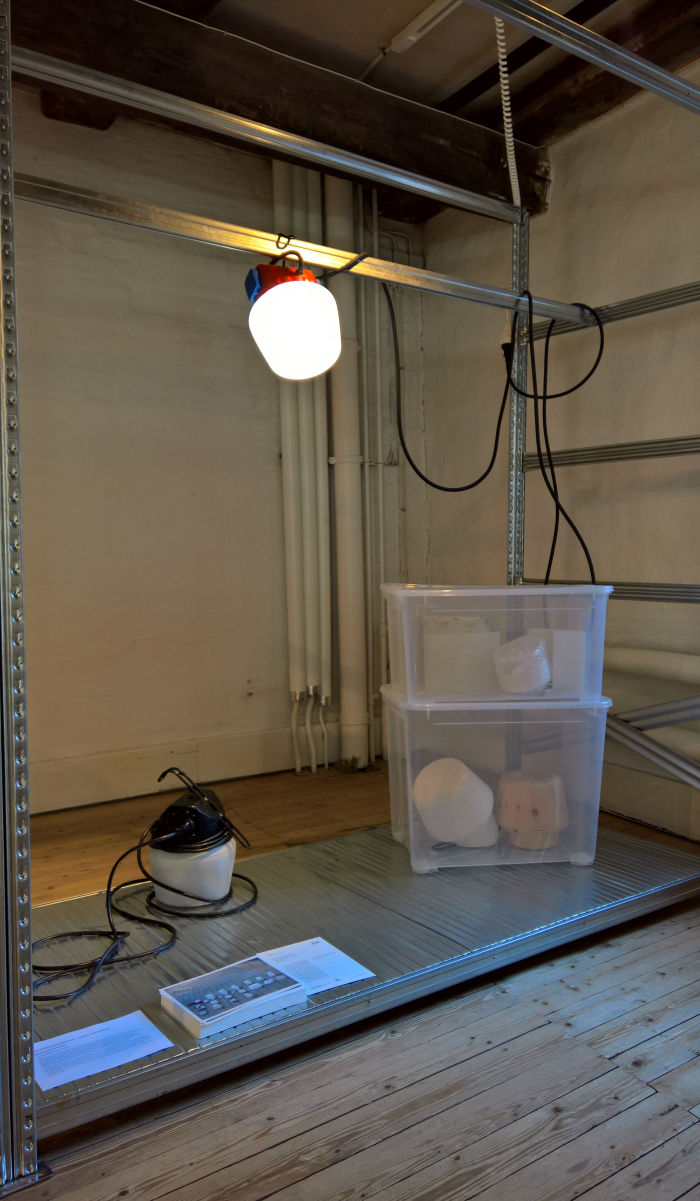
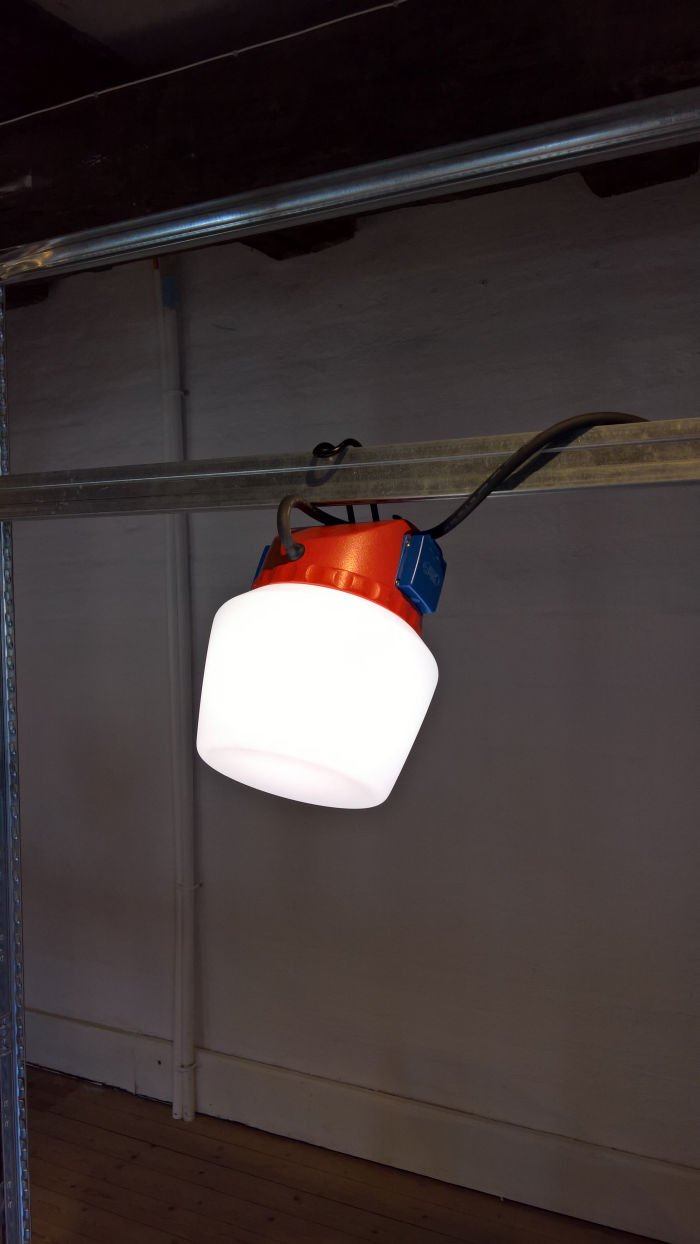
We could be wrong about this, but the name "Lemieux" would appear to be a play on "Le mieux", The best. If it is (or isn't) we can't really comment because, and as with most student projects, touching, moving, testing, kicking, et al were strictly taboo. Visitors being invited to look at and consider from afar. And doing so we liked what we saw: in essence Lemieux features a diablo-esque shade that can be raised or lowered by spinning it on a central screw, doing so altering the light intensity and distribution and thereby the function of the light in a space, allowing, we presume, to switch from a more direct to a more background light. A highly intuitive object, the form of the shade actively demands you spin it, many a three year old will do so weather you want them to or not, Lemieux is not only a, one presumes, very responsive object, but visually allows for a quietly unassuming, charmingly familiar table/desk lamp. Or indeed extend the screw by a couple of metres for a quietly unassuming, charmingly familiar floor lamp.
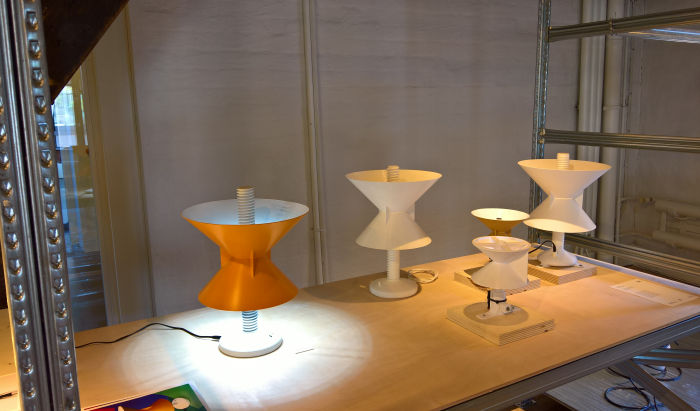
Although a project exploring possible uses of industrial waste, the physical manifestation of Hanna Carlsson's project was arguably more pleasing. Explorations of new materials is a popular theme in student projects, as it should be, not least because, and as oft note, new materials are an important driving force of architecture, design and society, and it is important that coming generations of designers consider from the very start of their careers materials just as much as they do function, form, usability or colour. With Residue Hanna Carlsson concerned herself with a composite of wood chip fibre and bone glue, so 100% biological and, one presumes, biodegradable, certainly a valid use of the residue of the chipboard and food processing industries, if not a mixture for all you vegans out there.
1Marcel Breuer, "Die Möbelabteilung des Staatlichen Bauhauses zu Weimar", Fachblatt für Holzarbeiter, Berlin, Januar 1925
By way of demonstrating the properties of the composite Hanna developed a very satisfyingly formed slipper-esque chair: the low back, one imagines, offers the necessary support, the material, again one supposes, providing the complimentary resilience, while the seat not only neatly conforms to Marcel Breuer's 1925 demand for an inclination that supports "the upper leg along its full length without the pressure that arises with a flat seating surface"1, but which through the raised rim creates a complete, self-contained, composition which bequeaths the whole a calmness. Yes one could argue, as we always do, that new materials demand new forms, forms which make optimal use of the new material's properties rather than mimicking those of existing materials; however, in terms of demonstrating some of those properties, and because chairs are objects which we can all instantly understand and relate to, a perfectly valid object for such a project. And a most pleasing one.
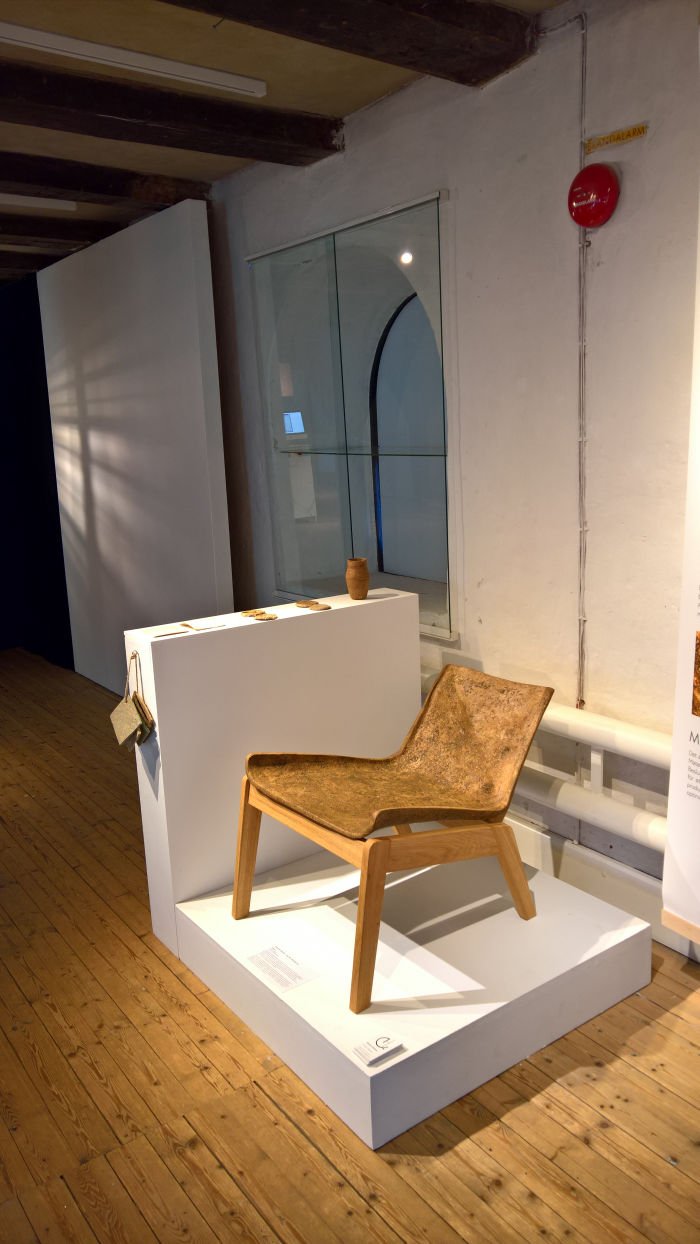
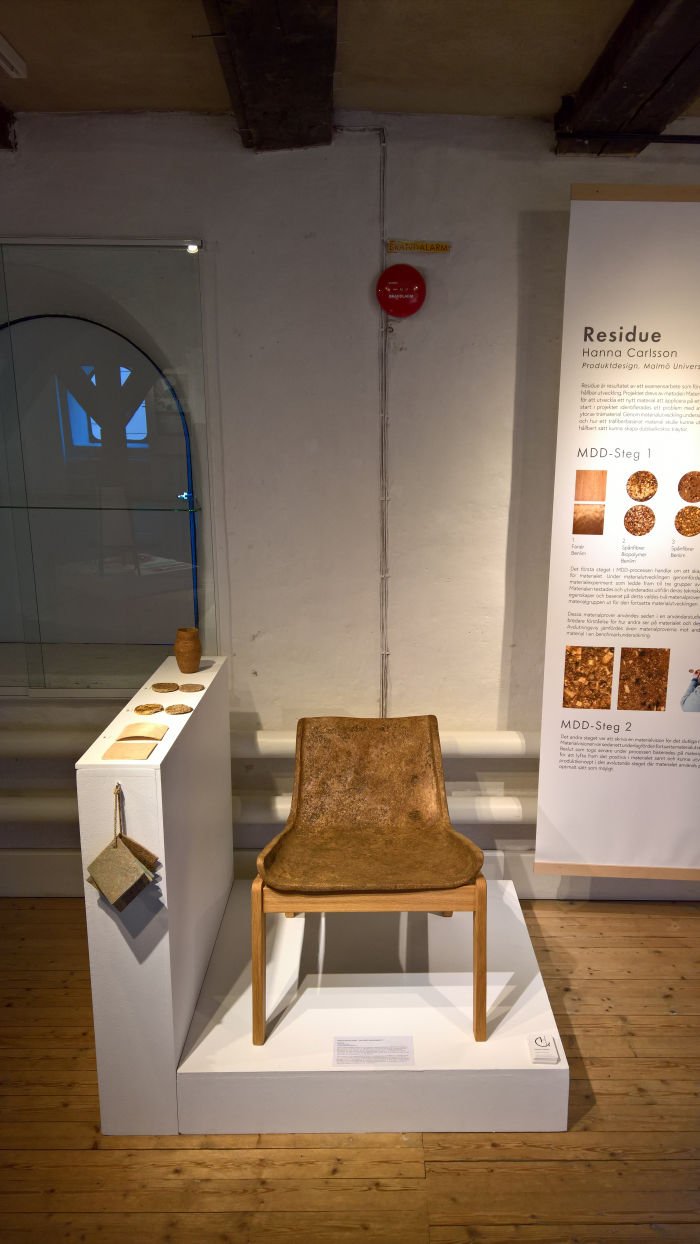
Once again staged in Gothenburg's Frihamnen harbour district and therefore requiring visitors to scale the mighty Götaälvbron bridge in order to view it, or perhaps better put, viewing the exhibition being your reward for having scaled the mighty Götaälvbron bridge, the 2019 HDK Gothenburg Degree Show featured graduation projects from across the school's Bachelor and Masters programmes, projects invariably with the most improbable names you'll ever meet, and including works as diverse as, and amongst many, many others, Modularity as an architect for sustainable aesthetics and behavior by Wood Oriented Furniture Design graduate Hampus Roos and which, via a very logical and satisfying construction system, allows not only for the straightforward construction/deconstruction/reconstruction of a formally very pleasing low-back chair, but also a good degree of colour variation through a mix-and-match of woods, and thus for a harmonious disharmony in your public seating; Ida-Luise Stelter's Living Temporarily which explored collaborative processes in design, which sounds undesirable, we still believe too varied an input from too varied a number of sources leads to a weaker end result, too many cooks definitely tending to spoil the broth, but did produce a prototype for an interesting looking storage object as well as reflections on the management and organisation of such a collaborative process; or Wooden Brutalism in which Nikola Matakovic employed generic aspects of brutalist architecture as the formal basis for a furniture collection, achieving thereby a collection of objects with a charm and strength of character that was most engaging. Then there was Rummet på bordet - The room on the table - by Ceramic's graduate Alice Noodapera Ramel which, and because we don't read things properly, we thought was inspired by the compositional processes of Italian music producer, and disco pioneer, Giorgio Moroder. Turns out it was Italian artist Giorgio Morandi. Easy mistake to make.......... But nonetheless charming and engaging reflections on table settings as scenery and tableware as components of that composition. And gave us Daft Punk's Giorgio by Moroder as an earworm for the rest of our time in Gothenburg, and thus sage advice that, "Once you free your mind about a concept of harmony and of music being correct, you can do whatever you want...."
Further information on HDK Gothenburg can be found at https://hdk.gu.se and information on all graduation projects at https://hdkexamen.gu.se
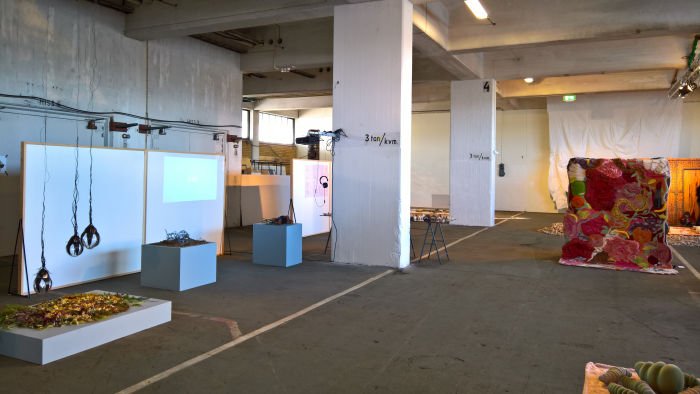
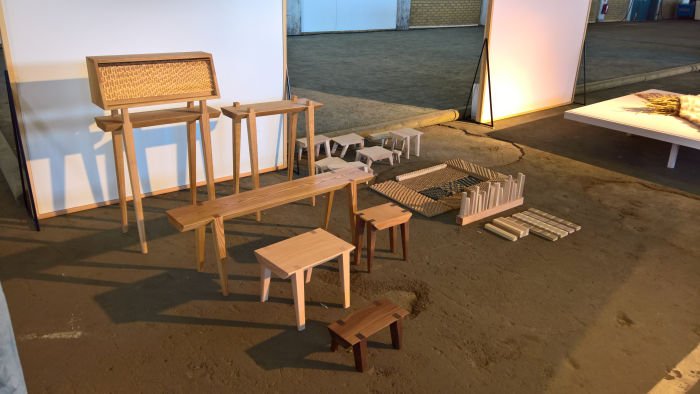
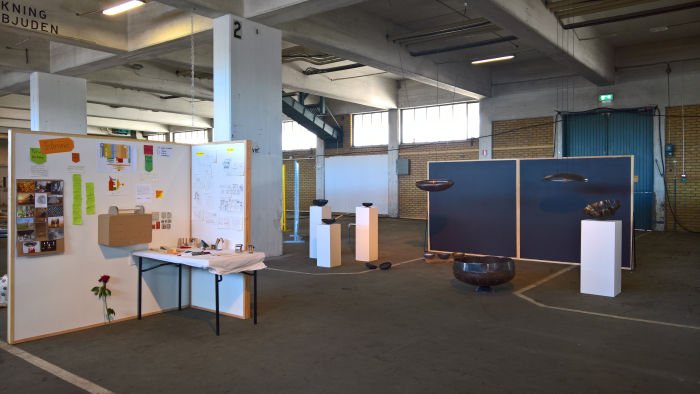
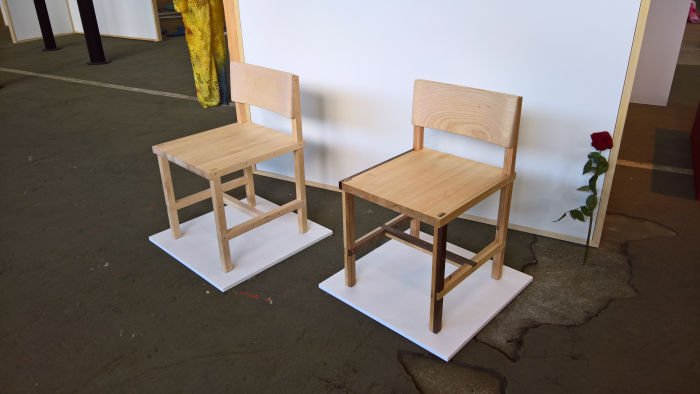
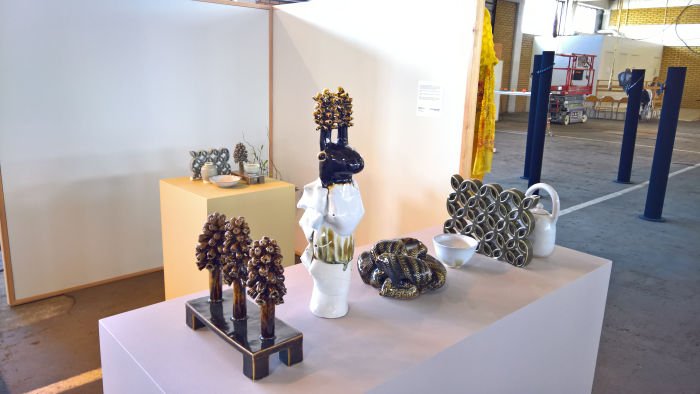
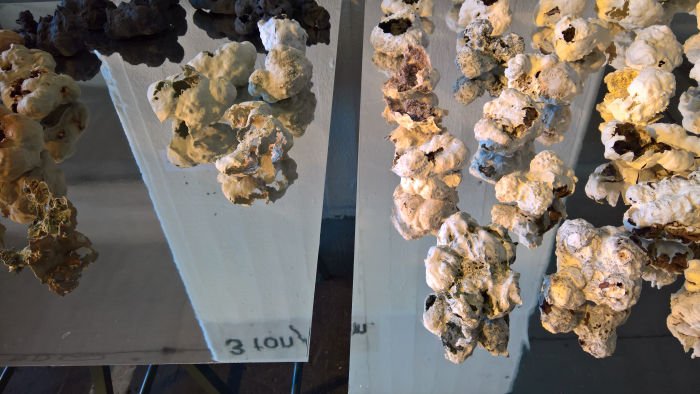
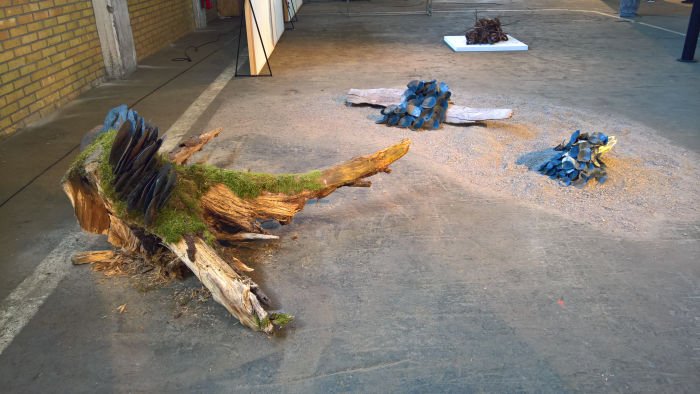
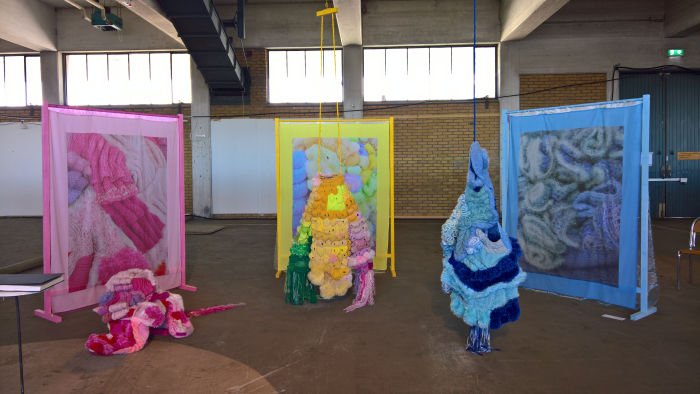
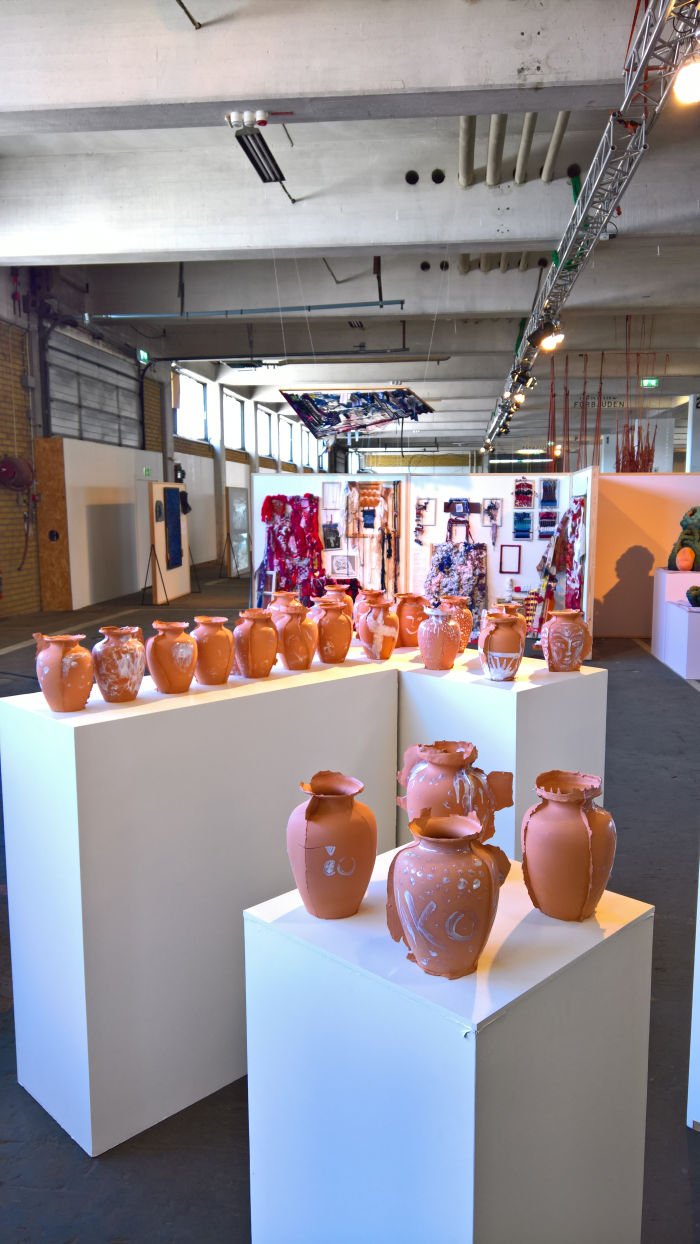
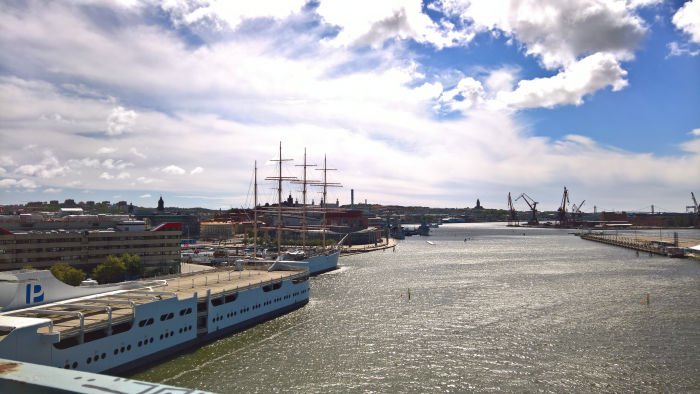
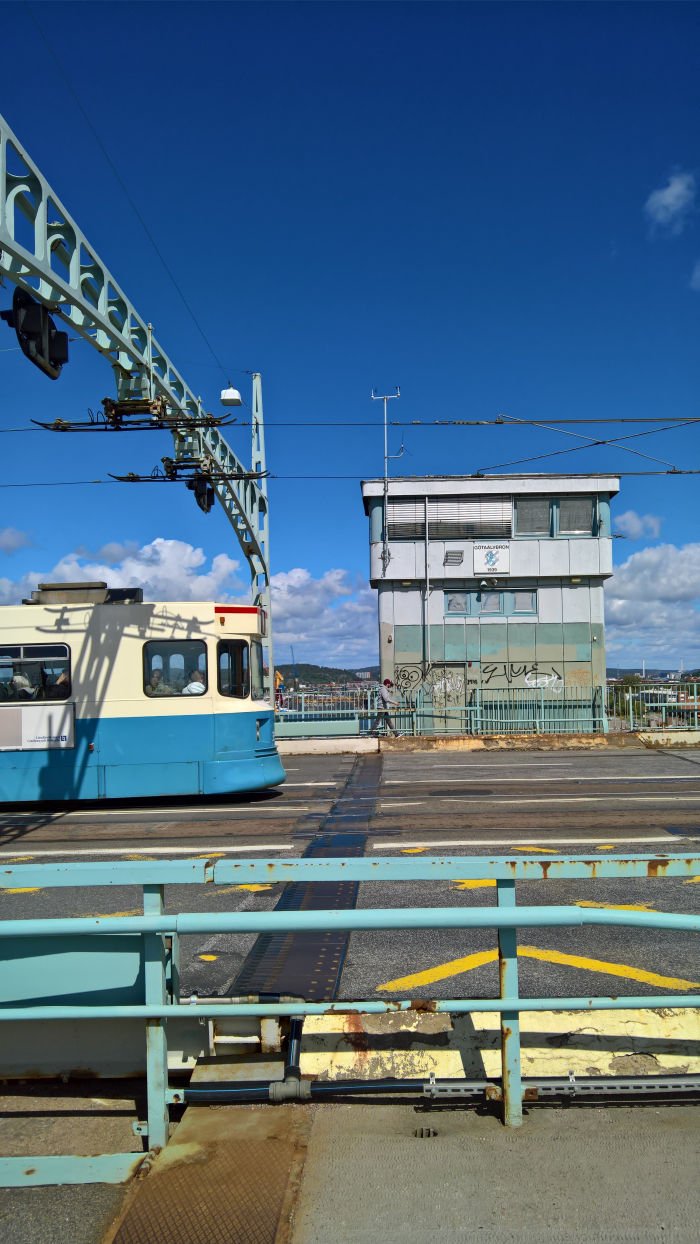
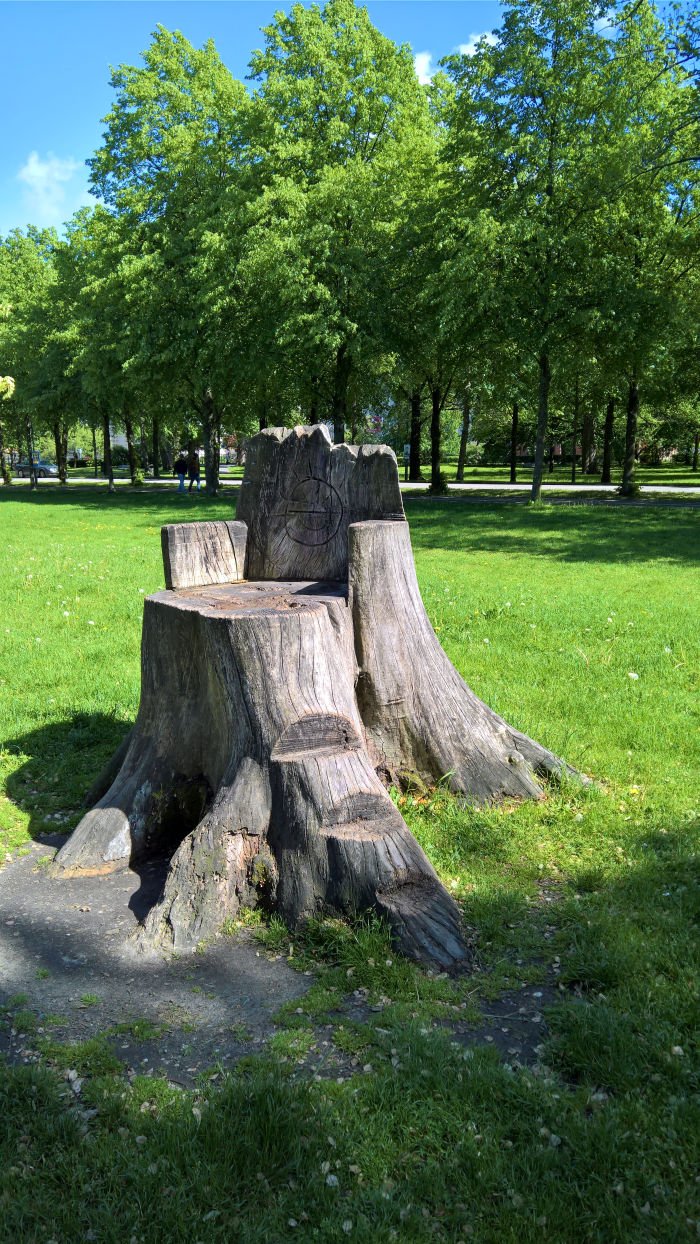
An indicator of how society has developed in the past century can be found in the fact that whereas at the start of the 20th century much of the discussion about new developments in terms of the design and production of the objects of our daily use concerned themselves with "machine production vs craft production", such discussions don't really exist today, machine production being such an established concept one simply assumes that coming generations of objects will be made by machines. They mustn't, and certainly craft, and associated understandings of local, slow, production do have many advocates, and advantages; but the advantages machines offer mean they will, in all probability, maintain a primacy. That said, the real 21st century "machine production vs craft production" debate will arguably begin when 3D printing becomes at truly viable option for furniture production, when furniture production becomes not only automated, but (almost) independent of the need for workers. And for all when that involves materials primarily considered the domain of craft, be that ceramics, metals, wood, et al.....
A future alluded to by Wood Oriented Furniture Design graduate Malin Fleen in her graduation project From company to form with sustainability.
Undertaken in cooperation with Finnish yacht builder Baltic Yachts the focus of Malin's project was materials and production technologies, and for all the use of environmentally responsible materials in furniture production, specifically a linseed based composite.
If we're honest, which we always try to be, formally we didn't really like what Malin realised, it didn't really rock our boat, no pun intended; but we did very much like the inherent demonstration of the possibilities of 3D printing bio-composites. No we didn't get the chance to try the works and so can't comment on the stability nor seating comfort, but assuming that to be given, or at least realistically achievable; however, if 3D printing is to move on and become a standard industry practice, something we believe it should and must, then it must demonstrate that it can be about more than plastics, can also be about ceramics, metals and natural materials, and for all that it can be about about ceramics, metals and natural materials in large, complicated, technical, objects. Something From company to form with sustainability does very convincingly.
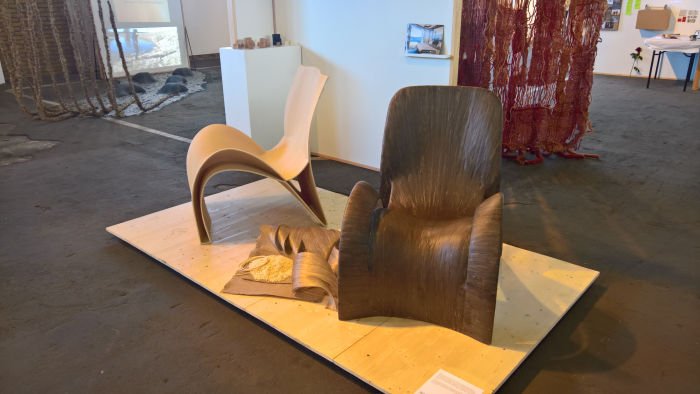
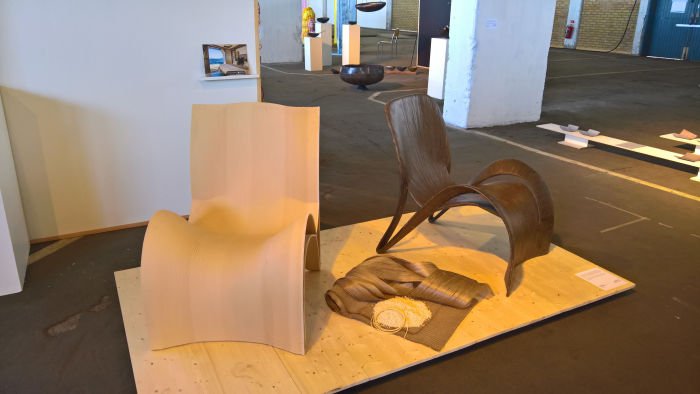
While for us Duns is all about Jim Clark, for Rasmus Norberg Duns is, as the sub-title states, an "Interpretation of Joy - An explorative method of how to visualise and materialise joy into a design platform". And while the key to the project is to be found in the theory, the object Rasmus realised and presented stands on its own as a delightful multi-use, multi-function object that one can sit on, lean against, perch from, and all those other things we need and want to do every day.
Joy is however a very personal understanding, and while Duns may represent joy for Rasmus, it needn't for all; however, we presume their is room within the theory to allow for the representation of individual interpretations of joy, perhaps even the development of an algorithm to allow us all to develop our own objects based on our individual understandings of joy.
Or is expecting an algorithm to deliver joy a little overly optimistic? Oh, hang on.......
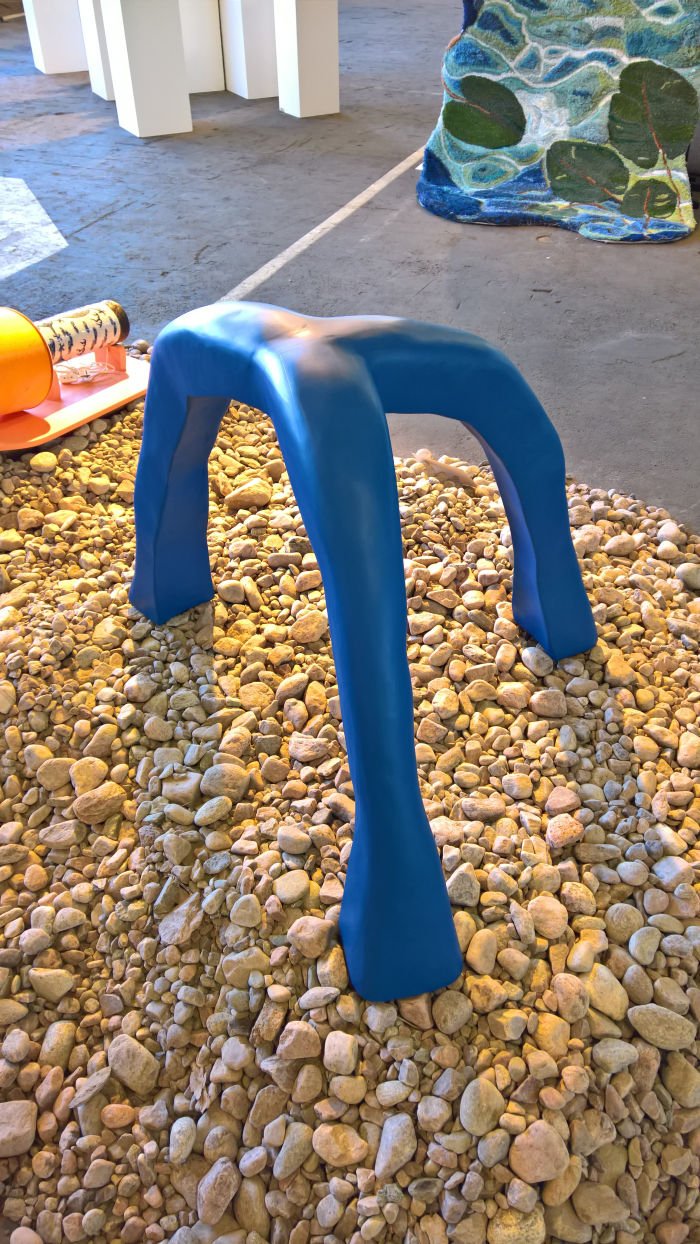
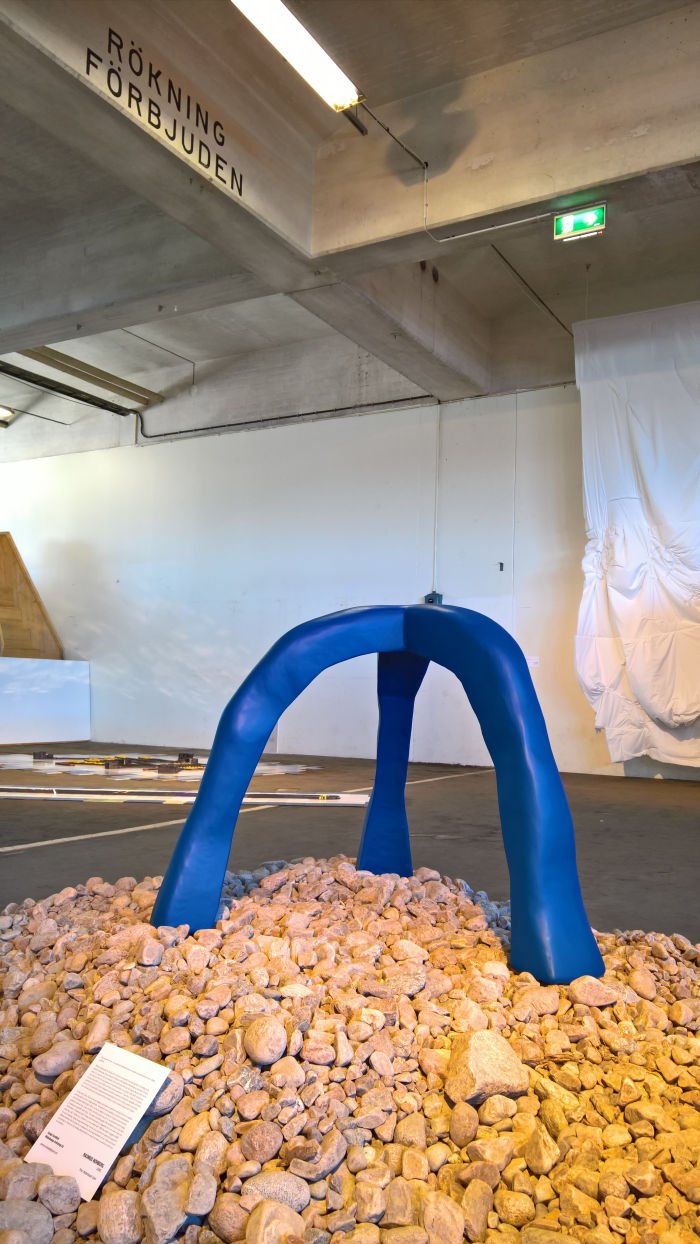
Established in 1960 by Carl Malmsten, one of the Grand Doyens of 20th century Swedish design, Capellagården was not only established on an pedagogic programme very much of Malmsten's authorship, but also physically: the old farmstead in Vickleby on the island of Öland which serves as the school's home reflecting Malmsten's more traditional understanding of not only architecture and our objects of daily use, but also Swedish society.
And this year of all years reflections on the likes Carl Malmsten are important, being as he was one of the leading Swedish opponents of inter-War modernism, a man who believed passionately in the primacy of craft, the follies of functionalism, who understood architecture and design as inextricably linked to nature, saw the continuation of tradition as important, and a creative who stood, (passionately) diametrically to Gunnar Asplund, Sven Markelius, Uno Åhrén, et al and the functionalist ideals presented (most famously) at the 1930 Stockholm exhibition. And this year of all years it is important to remember that such existed; and that where we are today isn't because we've followed one stream of thought, but because numerous streams have merged, and continue to merge, to form an ever wider, deeper, body of water architecture and design.
Still very much in Carl Malmsten's tradition Capellagården offers courses in ceramics, textiles, furniture and organic gardening, and that not only on a campus, and one can genuinely speak of a campus, that (we imagine) Carl Malmsten would still recognise, but in a village he (we imagine) would still recognise; the low flag stone walls, the wood-framed houses in a mix of hues, the church screaming à la Edvard Munch having (we imagine) changed very little. What (we imagine) has changed is the reason for the church's torment, the number of holiday homes in the picturesque, UNESCO world heritage, village, the traffic in the picturesque, UNESCO world heritage, village, and the presence of the outer world via the internet. What Carl Malmsten would make of the changes to Vickleby, we can only imagine, similarly as to what he would make of the 40 SEK entry to the Capellagården summer exhibition. We (you can imagine) didn't think very much, being as we are firmly of the opinion that schools should encourage as many visitors as possible to view and engage with their students' projects, not putting barriers in the way, even when its a relatively small sum such as at Capellagården. Yes, we understand that such an exhibition has costs outwith those of the school's educational budget, understand that every Kroner or Euro invested in such an exhibition is one less for the workshops, library or lecture rooms: but for us charging visitors ain't the way to cover them. And which isn't a complaint, just an observation, an opinion, and, yes, we're digressing again.....
Featuring not only a mix of projects from across the school's programmes, but years, every one of the school's circa 100 students being represented by a project, Capellagården's Sommarutställning 2019 featured a diverse mix of projects from the (very) traditional over the (much) more conceptual on to those that, for us, combine both: garden design. Represented, as we understand, for the first time in Capellagården's summer exhibition, the 16 Trädgård students cooperated to create 4 gardens inspired respectively by reflections on their personal relationships to flora, the how, why and what that relationship brings them and by extrapolation human/flora interactions; by streams as both tangible and intangible experiences; by Persephone, the ancient Greek Goddess of fertility; and by the tension between the romanticised image and the harsh reality of life in the rural peasant communities of yore, and also the tension between the way we reject that lifestyle today, but also yearn for it.
The latter garden including, as indeed did the fields and verges around Vickleby, cornflowers, specifically in the variety Blue Boy. And which, invariably, gave us Blue Boy's "Remember me" as an earworm. One which worked surprisingly, unsurprisingly?, well against the stillness and space of Öland.
Elsewhere, and amongst many other projects, with Rommet i Rommene - Room in Rooms - Gabrielle Weststeyn presented a rug reflecting her first year at Capellagården, a thoroughly charmingly abstract interior composition, and one which tends to contradict Malmsten's ideological predecessor and mentor, Ellen Kay's, admonishment that a floor should never "in any respect draw attention to itself"1; with her project Liggunderlaget Johanna Krämer created a padded textile mat/cushion which while not doing anything especially revolutionary did so with a singular and satisfying charm and elegance; or Den stillsamma visselblåsaren - The quiet whistle blower - by Frida Signahl, a project we're not claiming to have understood 100%, but which in asking "Varför gör du ingenting?", "Why don't you do nothing?" did strike a chord. Not with us, obviously, we do nothing all the time, but with considerations on our contemporary digital culture. Must you look at your feeds all the time? Must you play that game all the time? Why not spend that ten minutes until your bus arrives engaging with what's around you, and reflecting a little, rather than overloading on the new. Can't you just stare quietly out through the window? "In silence thought grows, In silence grows wonder" writes Frida. Ain't that the truth. And what better way to instigate nothing than a large, silent, ceramic whistle?
1Ellen Key, Beauty in the Home, reproduced in Modern Swedish Design: Three Founding Texts, Ed. Lucy Creagh, Helena Kåberg, Barbara Miller Lane, Museum of Modern Art, New York, 2008. The essay was first published in 1899, the version in Three Founding Texts is a translation of a 1913 version.
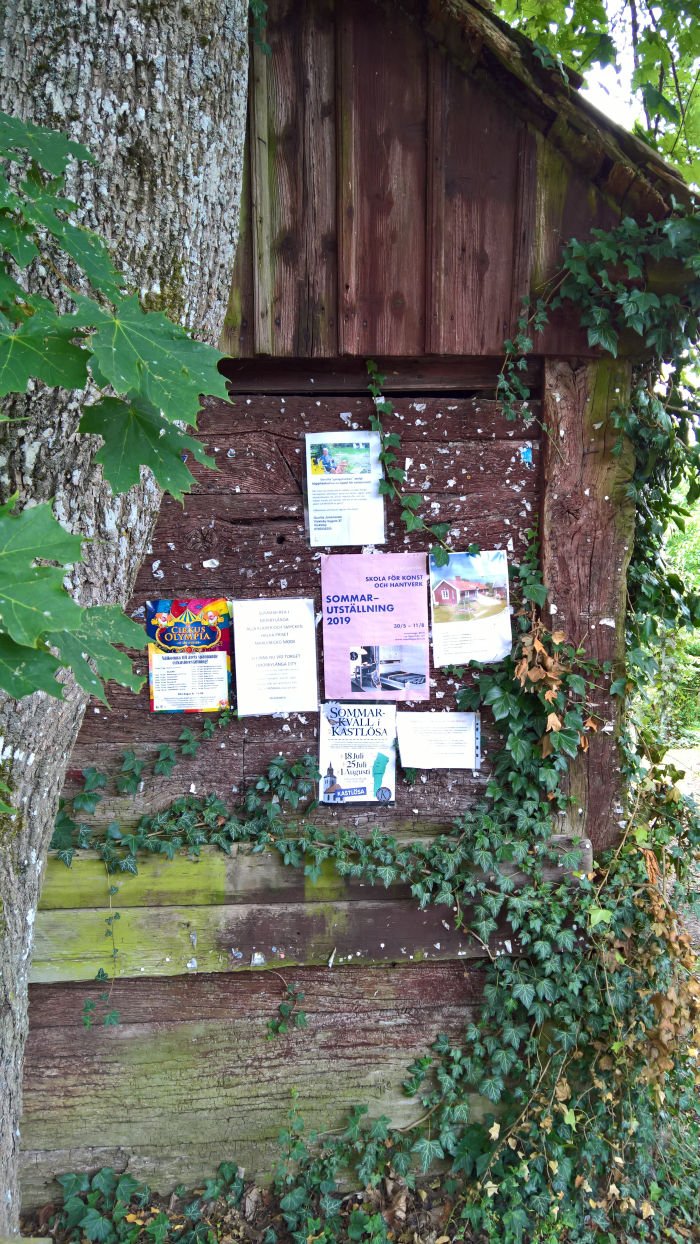
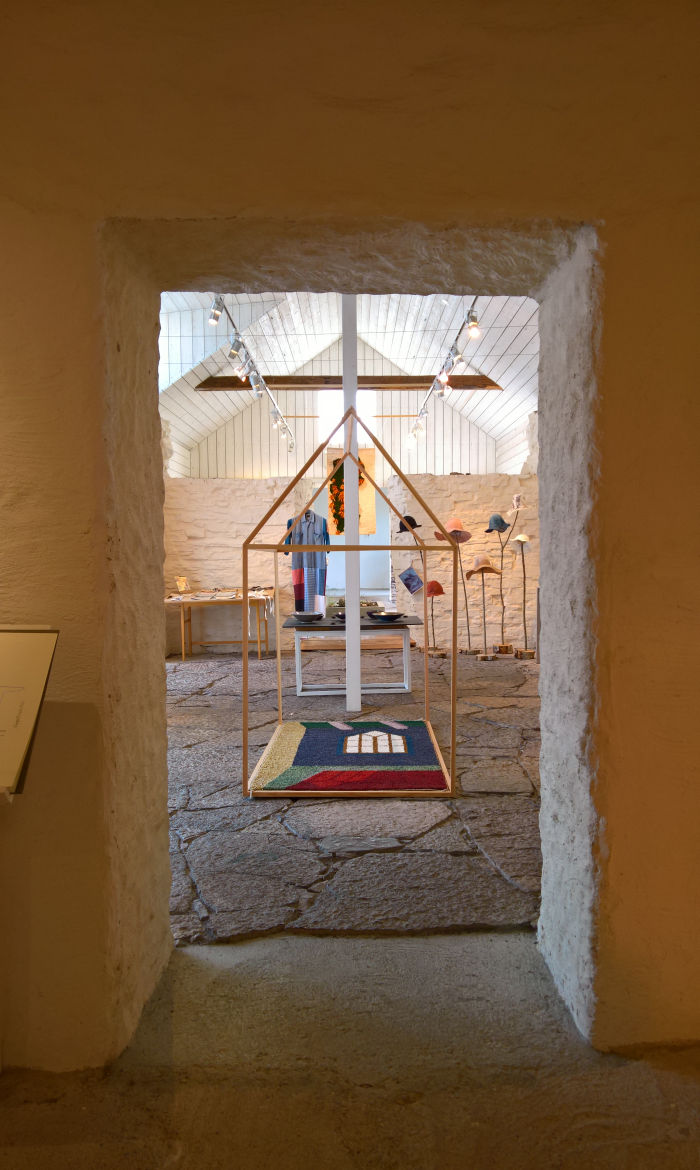
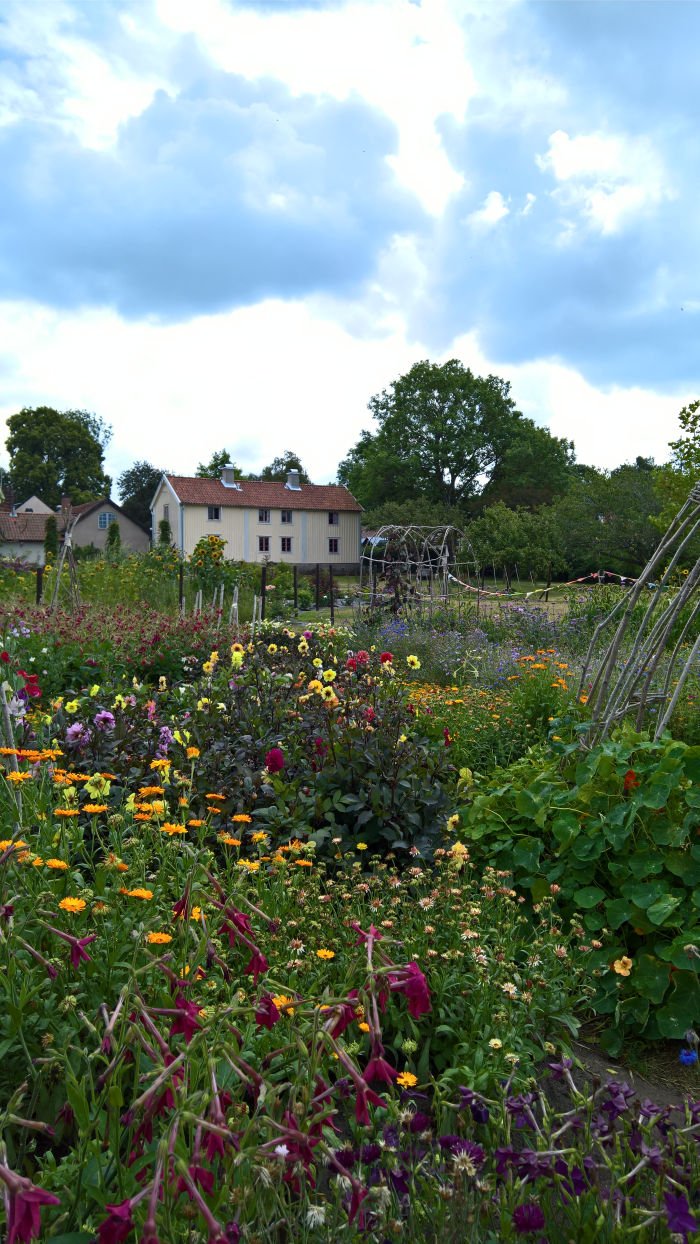
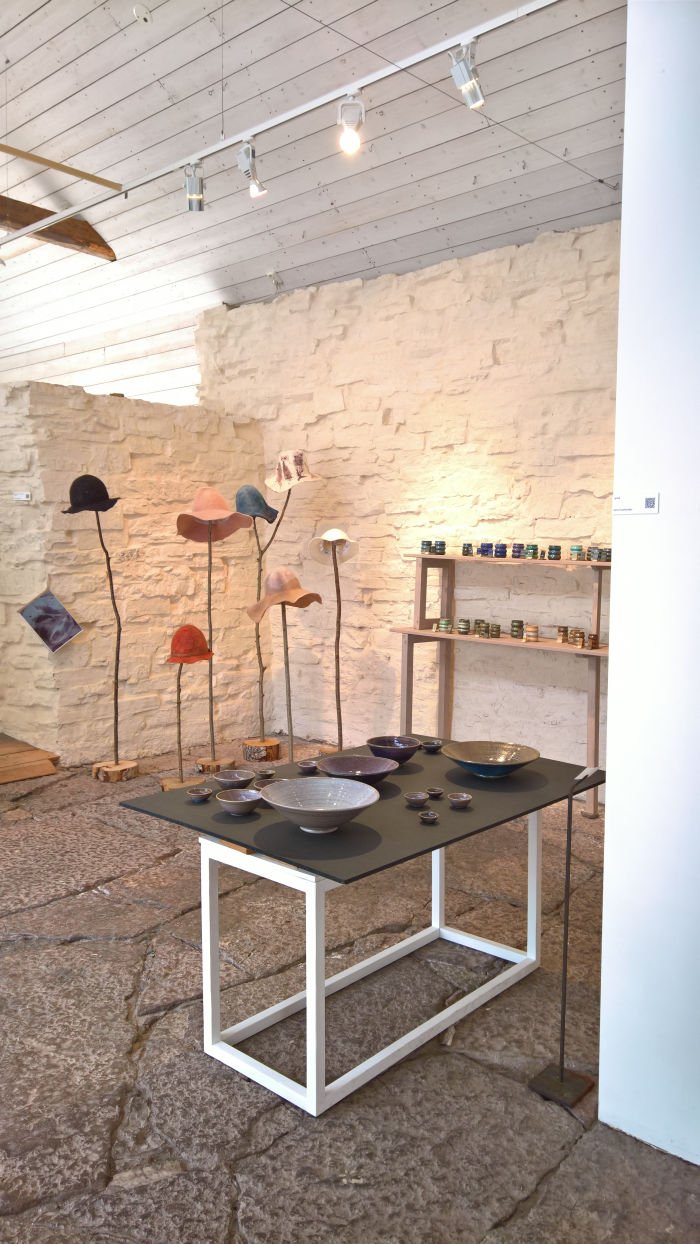
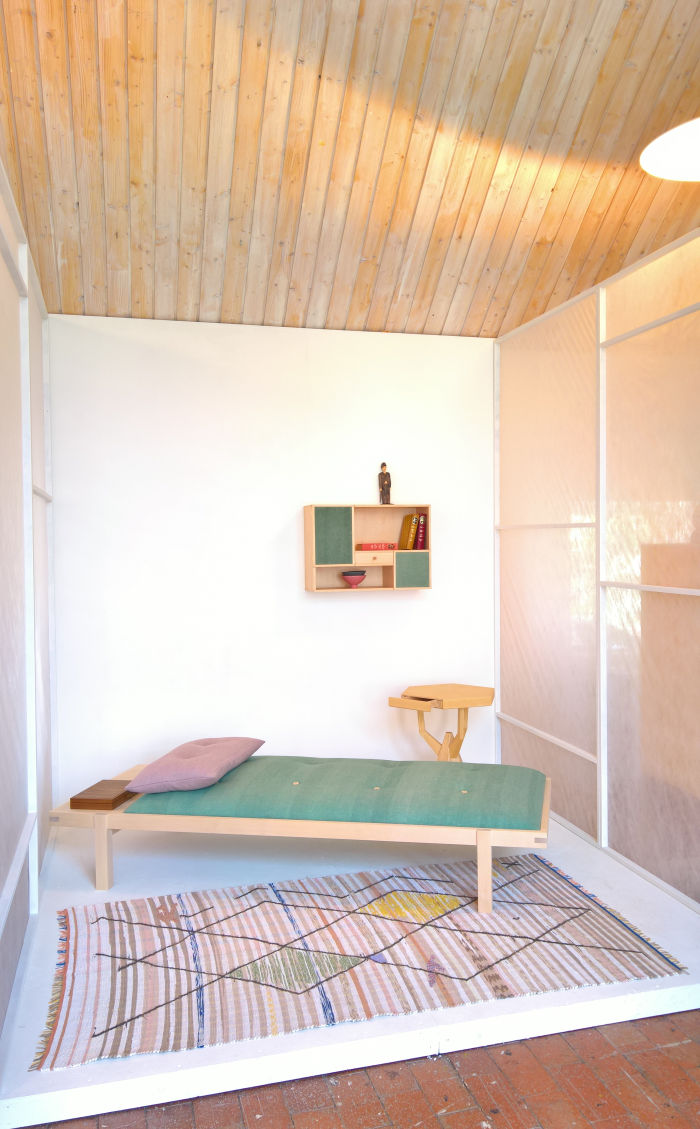
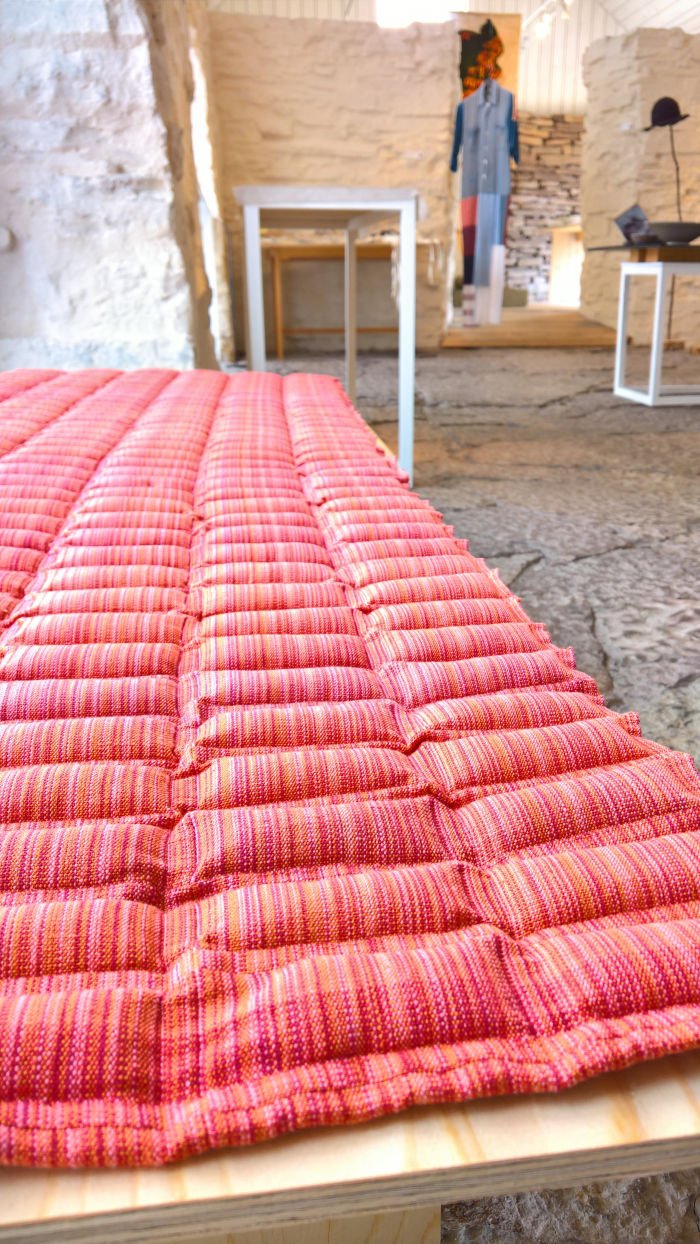
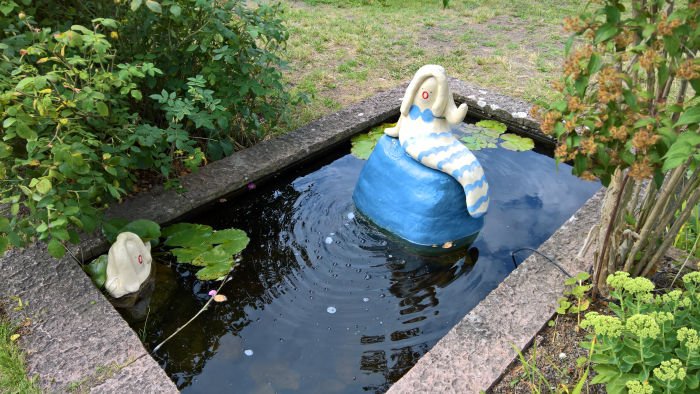
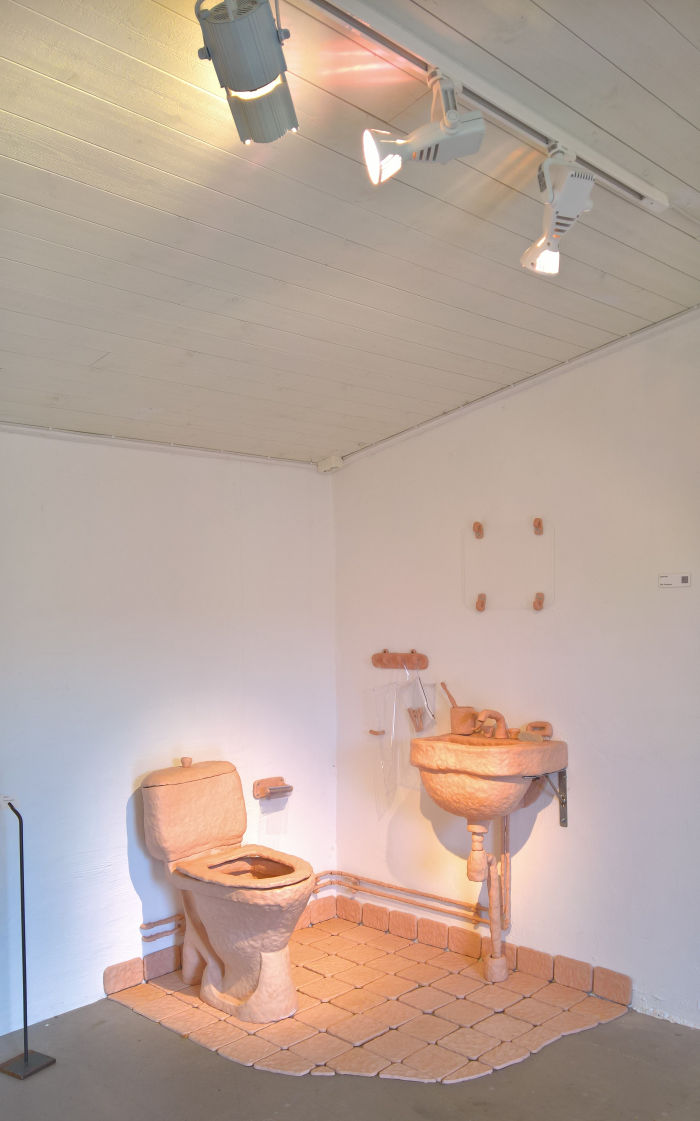
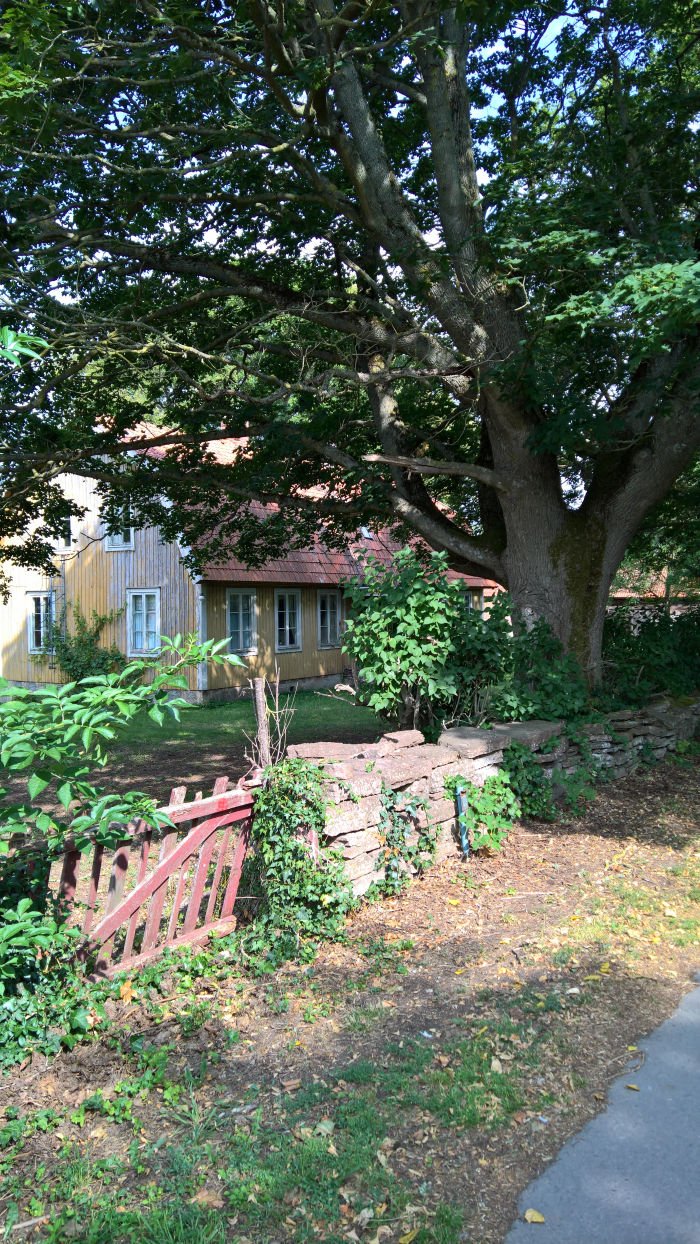
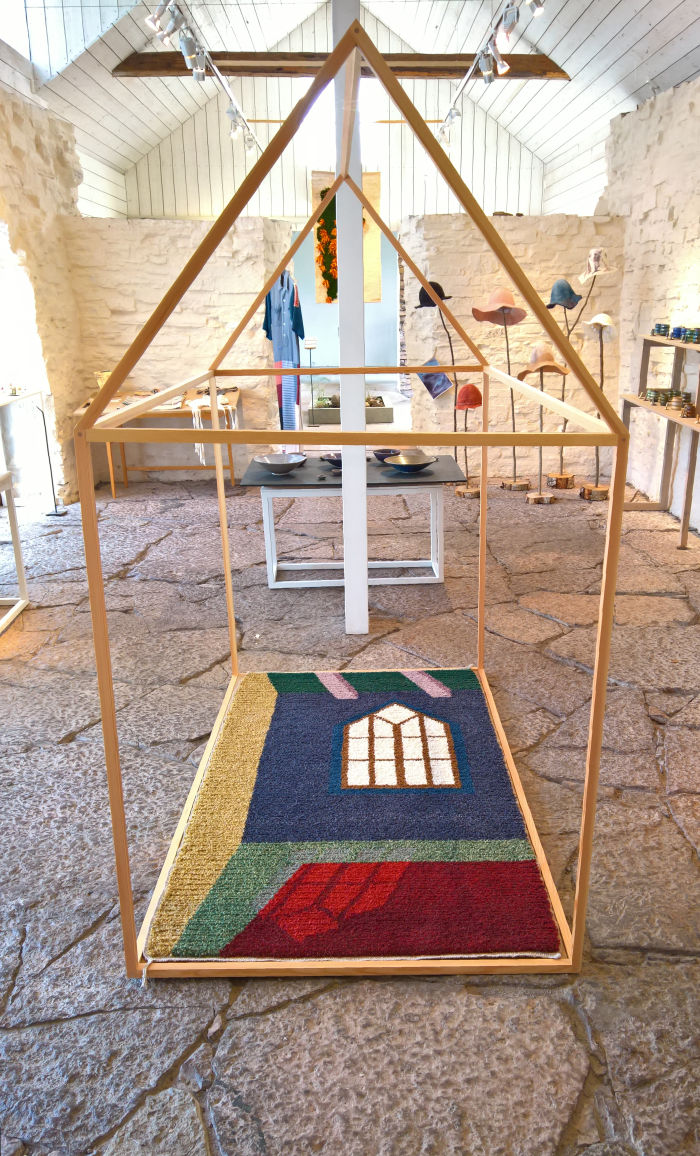
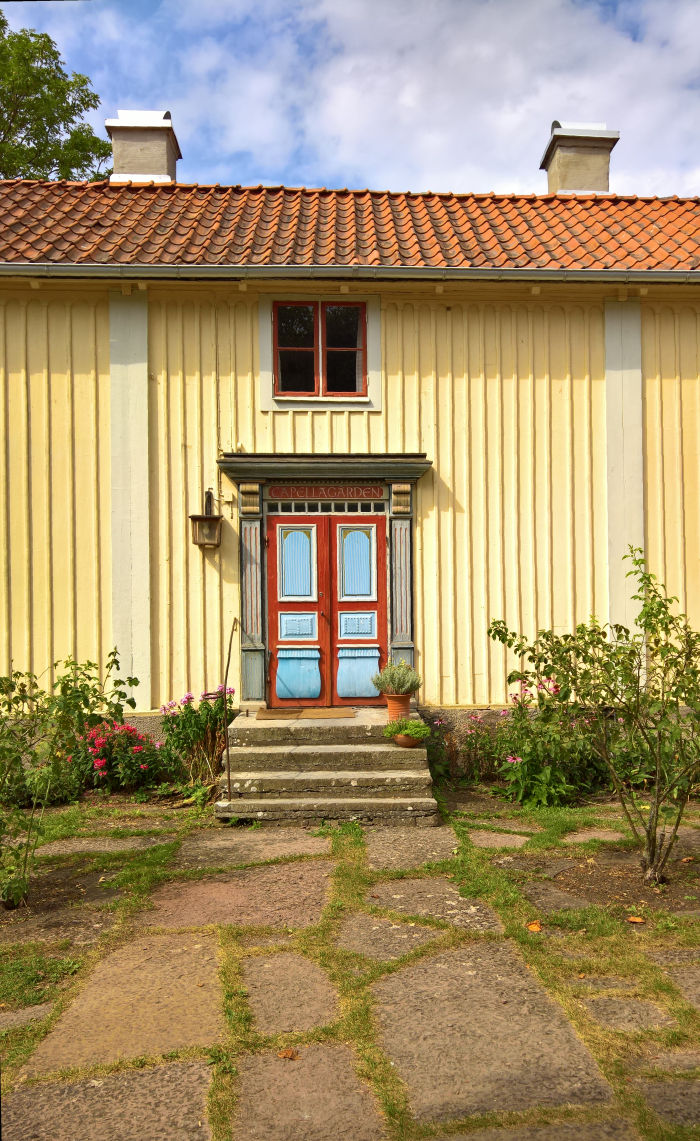
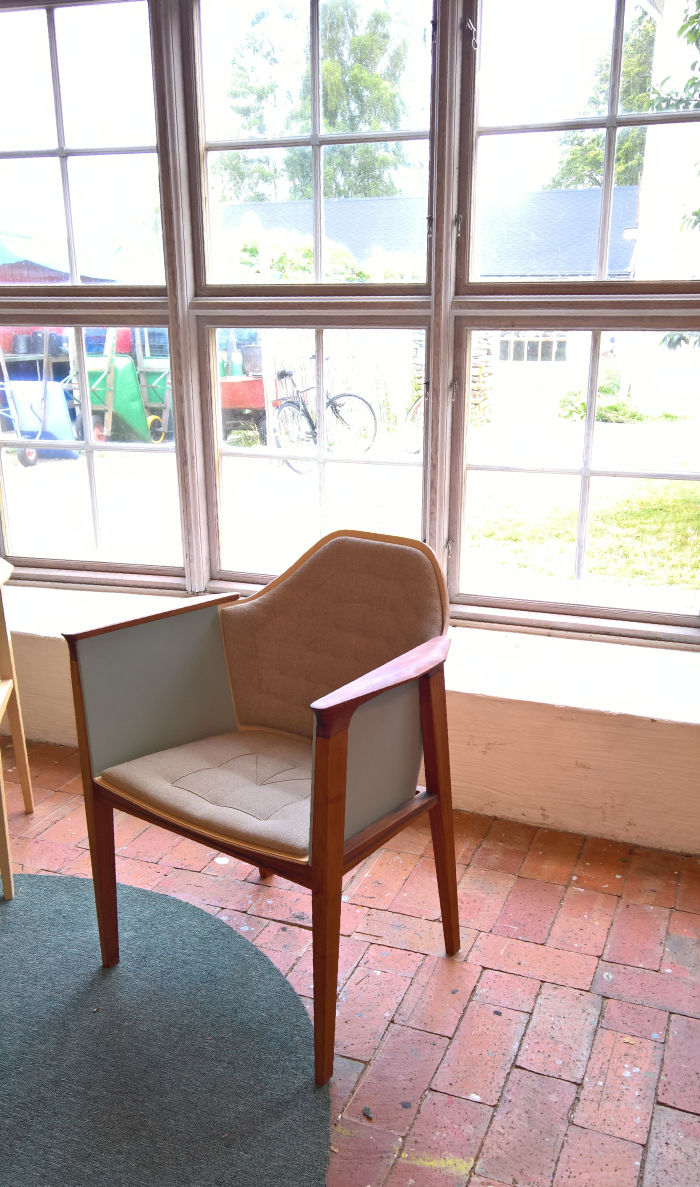
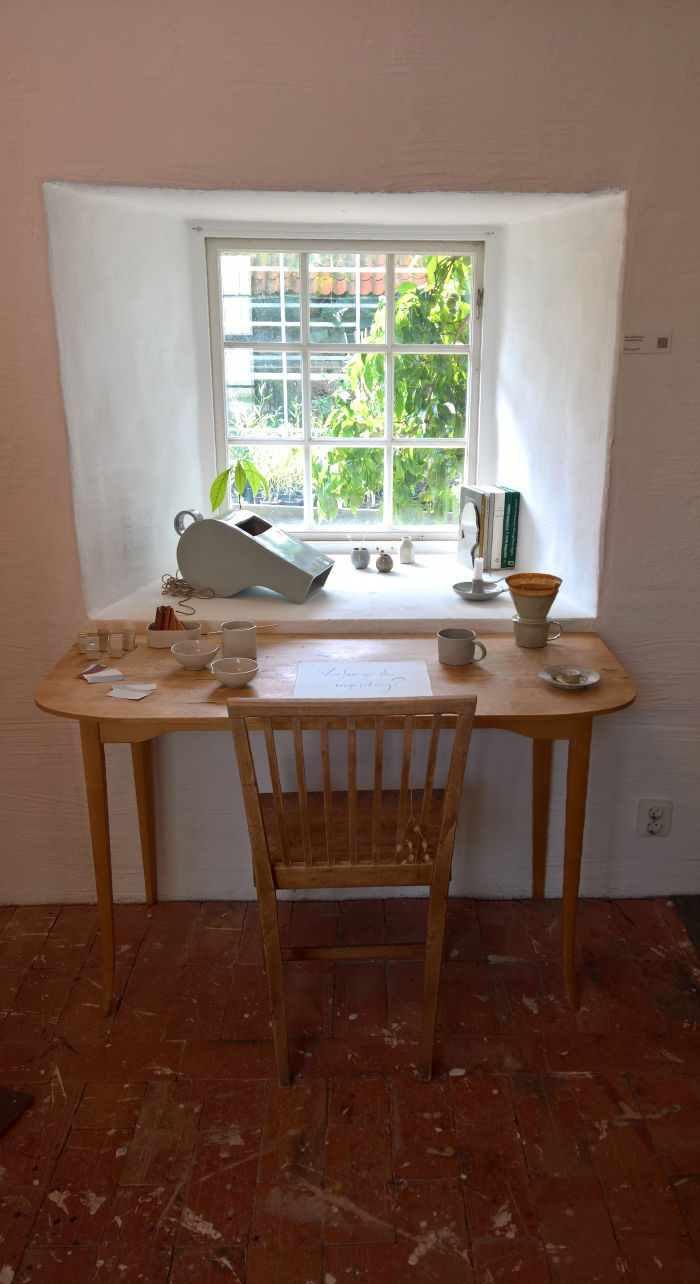
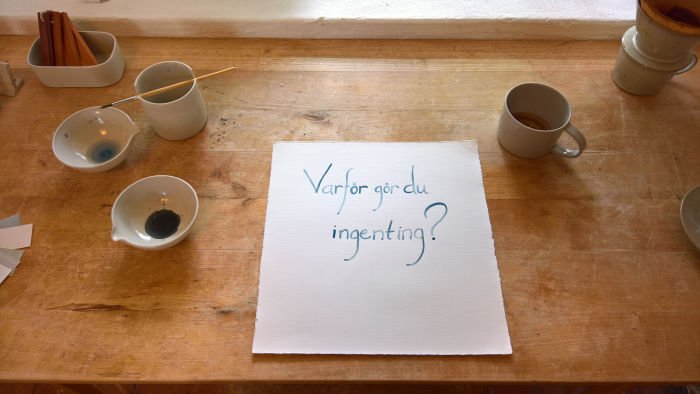
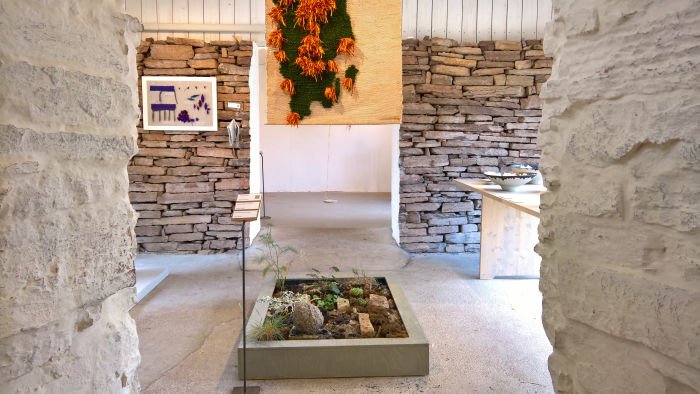
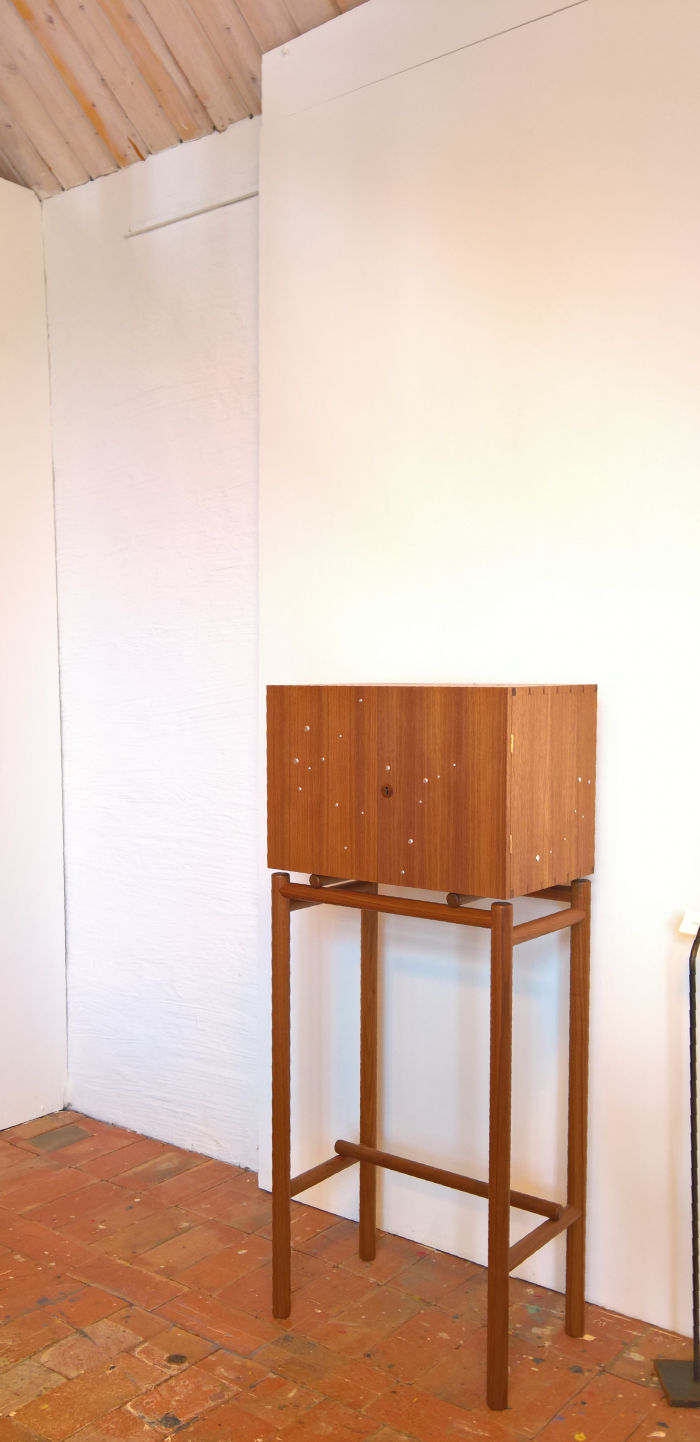
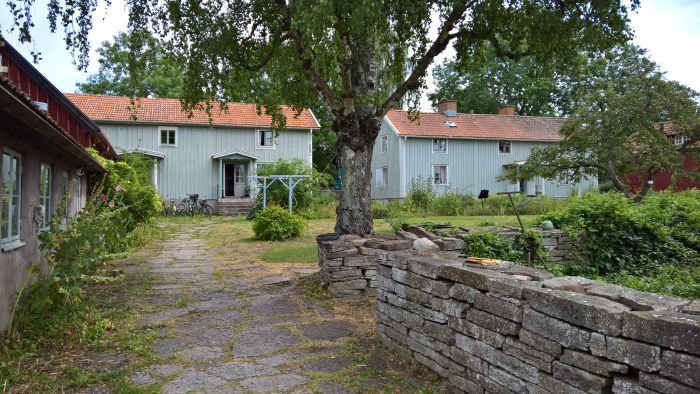
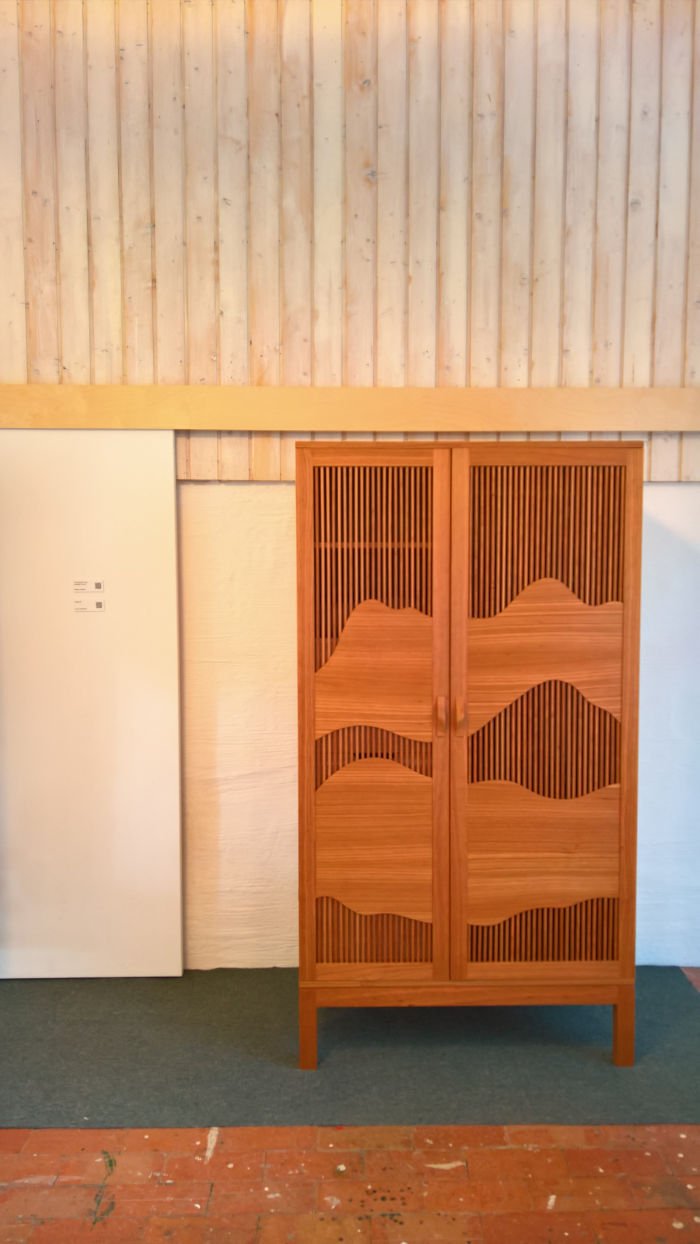
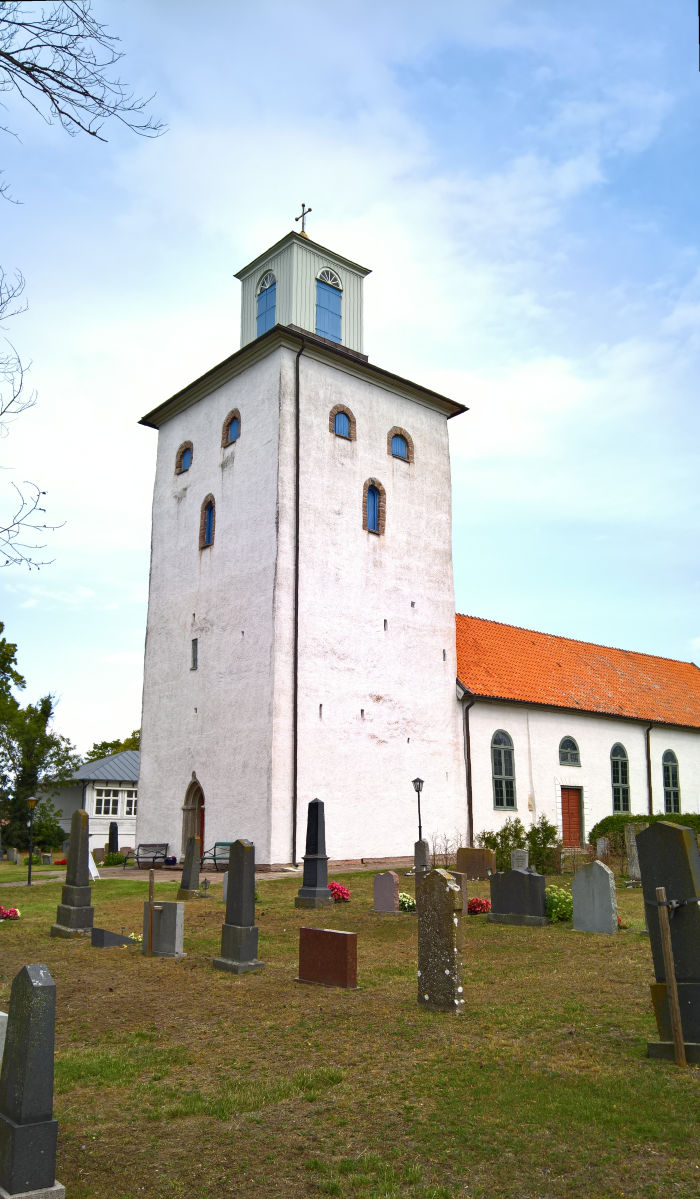

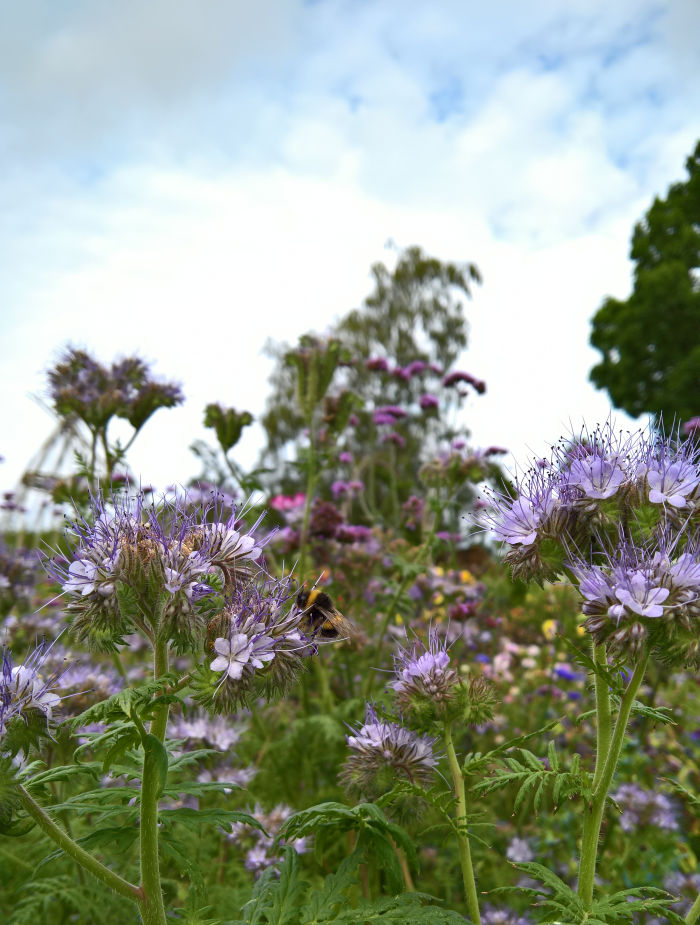
Further information on Capellagården can be found at www.capellagarden.se and the 2019 Sommarutställning catalogue at www.capellagarden.se/2019 (pdf, ca. 24 MB)
Starting from considerations on the fluid border between your own memories and stories you once heard - which are real, which aren't, does it matter? - Ryota Makino created translucent 3D ceramic compositions based on prints by Josef Frank, an architect and designer every bit as bound to nature as a Carl Malmsten, and objects, one presumes, certainly from the picture in the exhibition catalogue if not from the presentation in Vickleby, which are intended to be integrated into a space so that light can shine through. And which through doing so would appear to allow plenty of opportunity for creating dynamic, vibrant, interiors. For all on account of the compositions Ryota has realised, the addition of 3D characters and elements to the background motif creating tiles that are as much animation as decoration, and, one presumes, become all the more so as the changing light in the course of the day creates an ever new ambiance. Becomes, if you will, a living, breathing wallpaper. And also a very nice reminder that there can be an awful lot of vitality in Frank's prints, they are often anything but static.
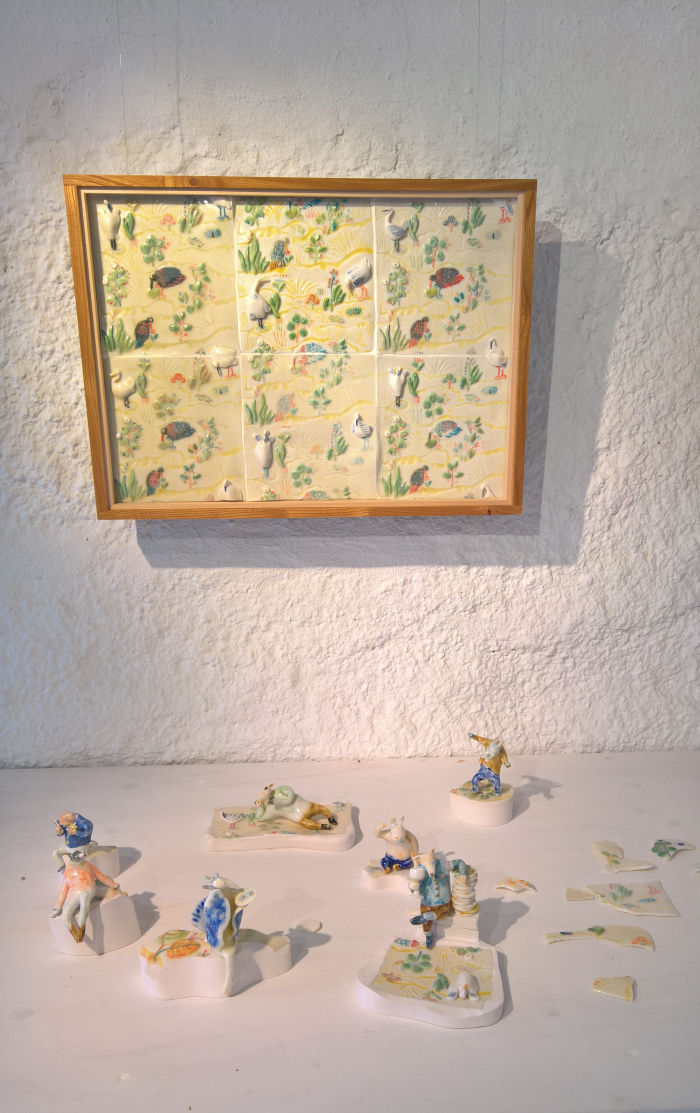
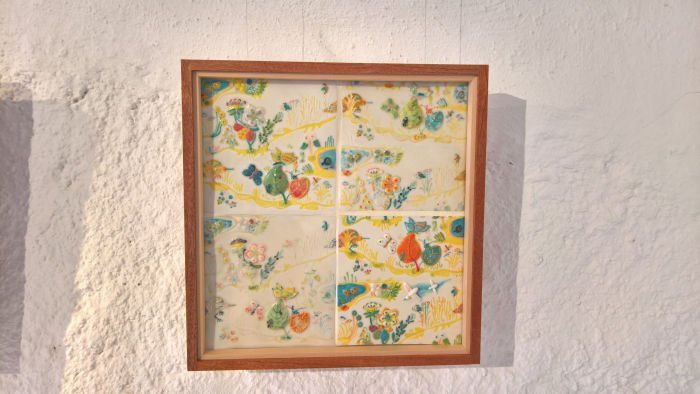
It took us an awful long time before we struck up a conversation with Tevagn. As in an eternity. Looking back we think we were initially put off by the very obvious nods to Alvar Aalto's tea trolley. However slowly we struck up a conversation and it began to reveal a little more to us and before too long we were fully engaged. Serving trolleys and bar carts are horribly, horribly, en vogue at the moment, every furniture manufacturer has one. Why? we know no, we just know that; and that most are about show, about presentation of the trolley/carts contents. Tevagn strikes us as being more about processes: as an object it can only function if the user fully considers what they are doing and commits to following a set workflow, is, if you will, a trolley/cart for the rituals of tea making, be that the highly formalised of the east or the more relaxed of the herbs picked from your own Swedish organic garden.
Yet despite our long conversation, we did miss something. Our Swedish is a bit rusty and so we didn't fully grasp the "Testa lådorna då får du se!", until later. "Test the drawers and you'll see!" Had we, to judge from the rest of the text, we would have heard noises appropriate and complimentary to tea. Although in our defence there was also a very prominent "Do not touch" sign right next to Tevagn, so testing the drawers didn't even come into consideration. If drawers that make a noise is necessarily a good thing, we know not, but as a reflection on the function and purpose of a tea trolley, a very interesting study.
